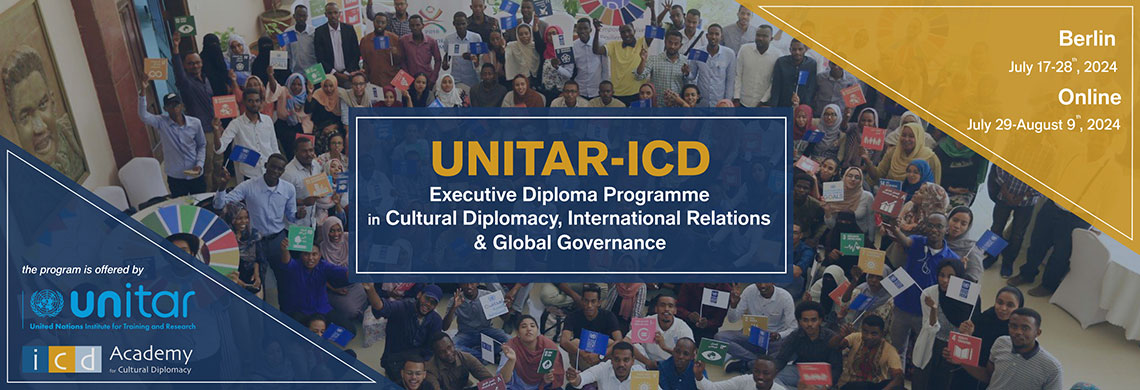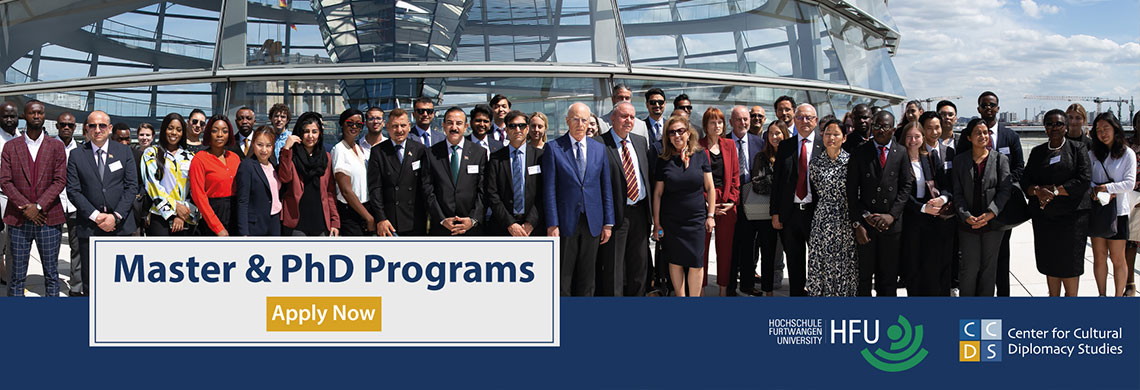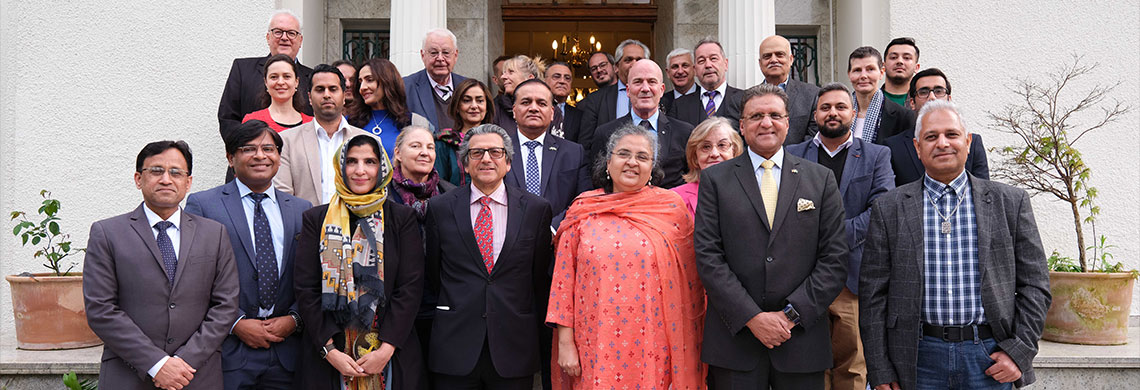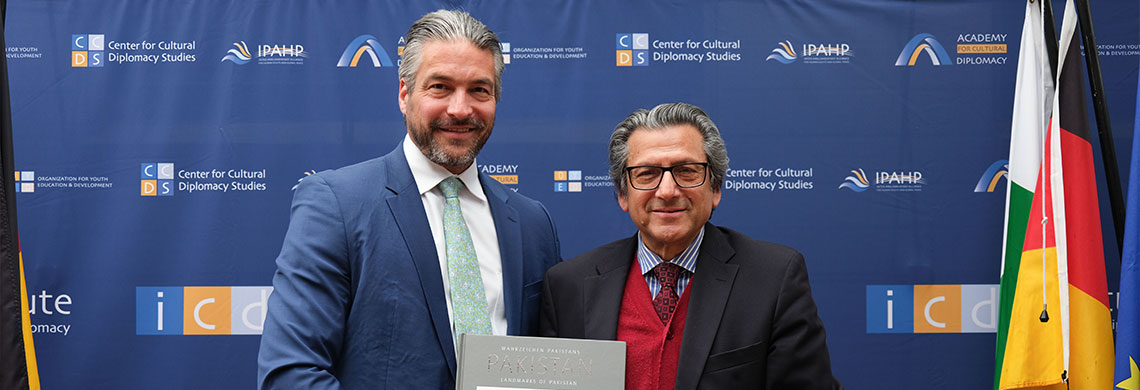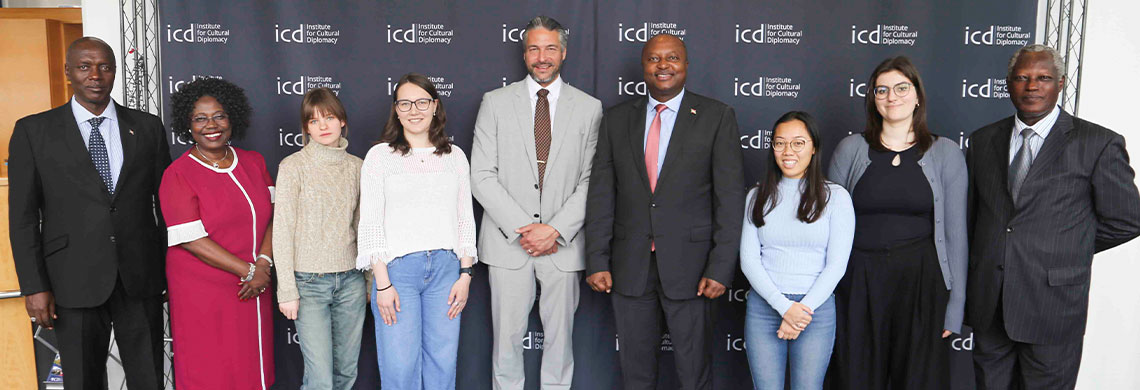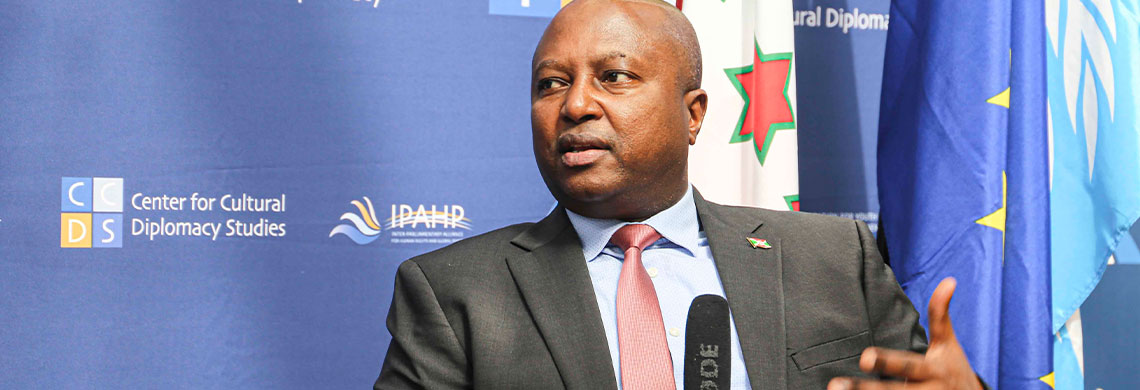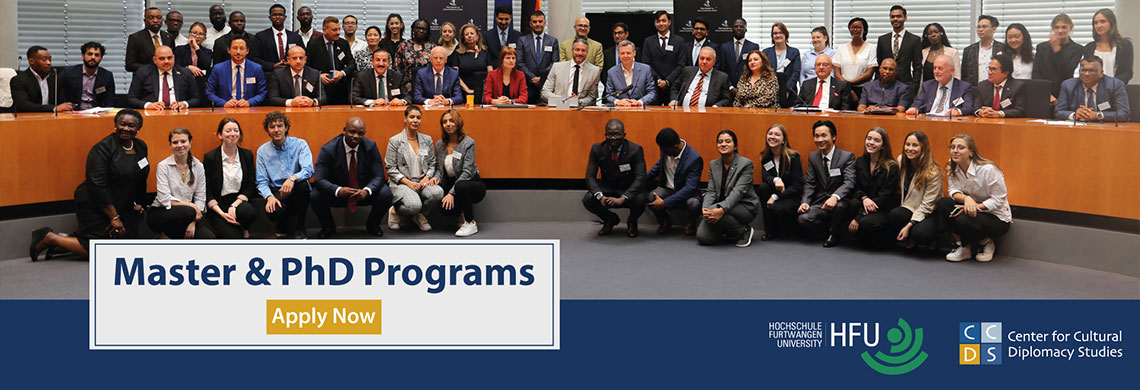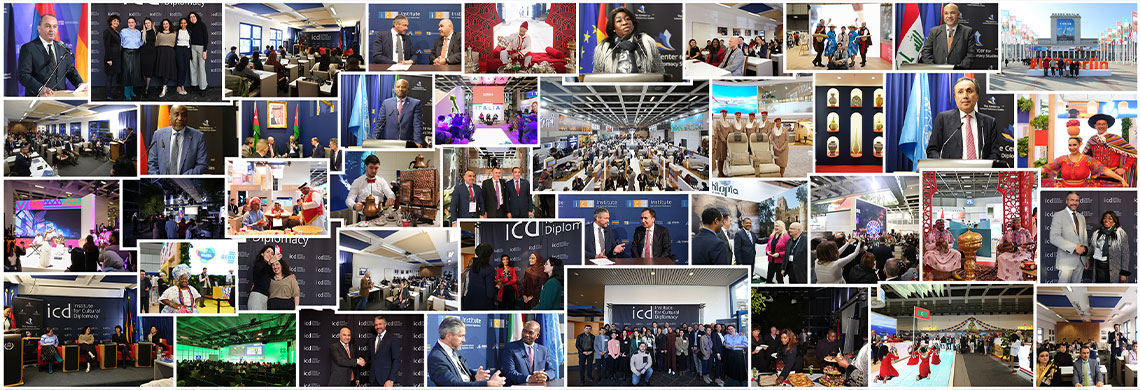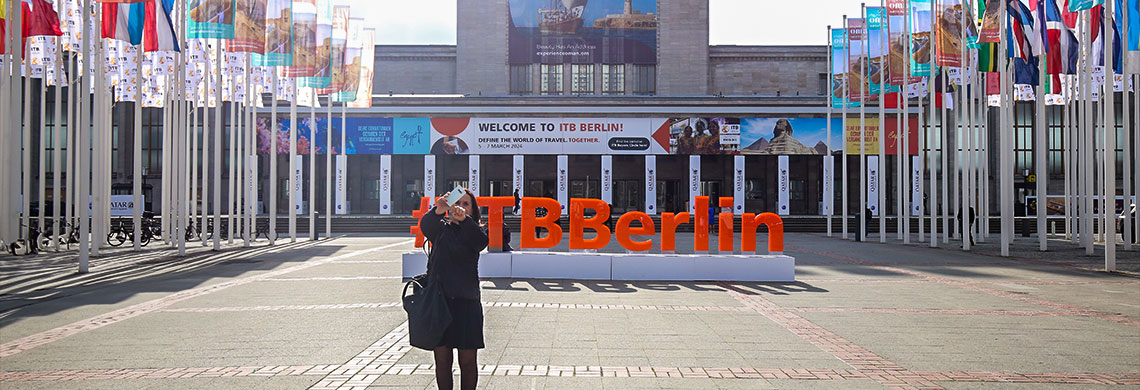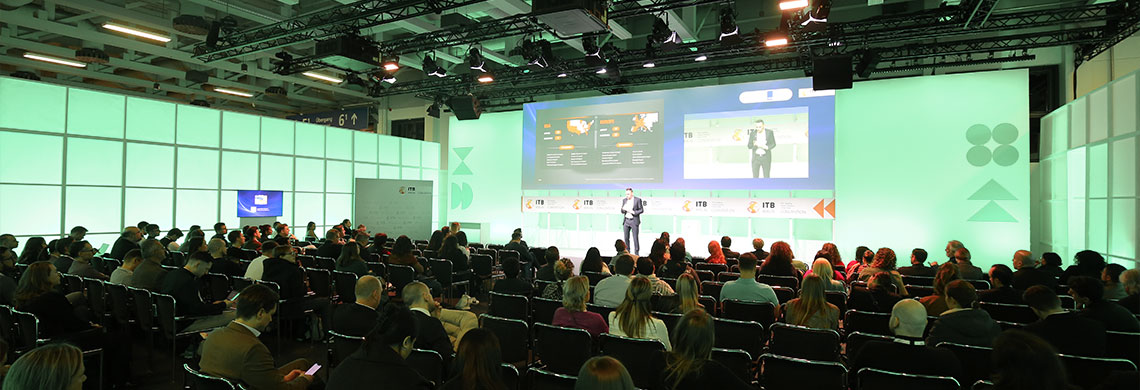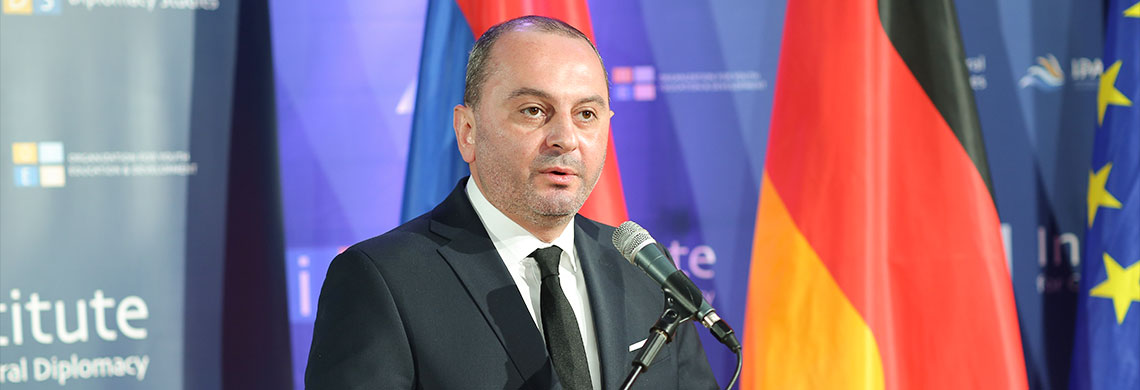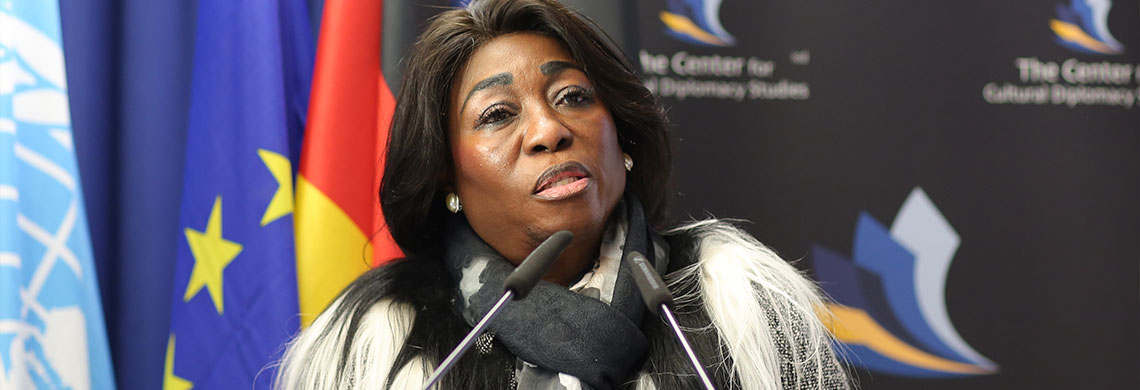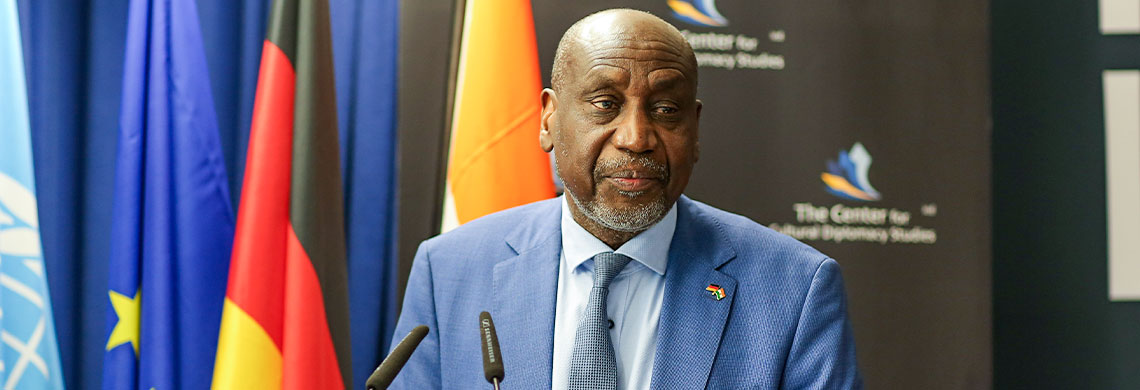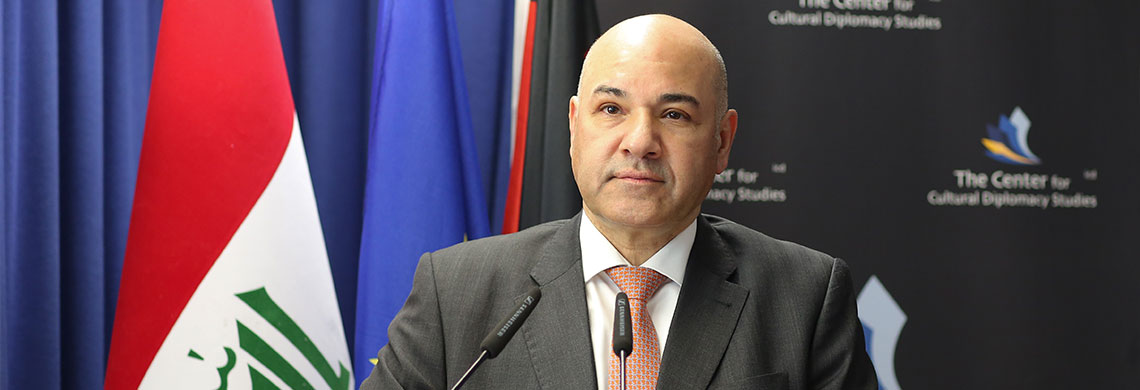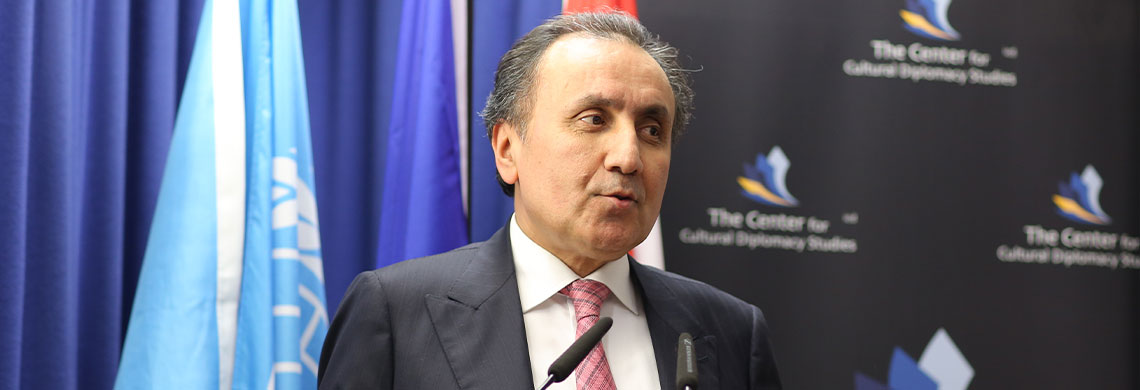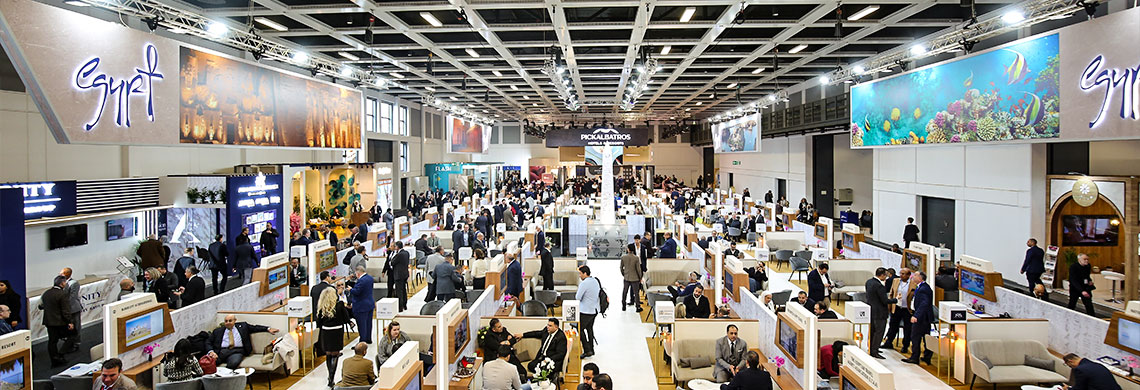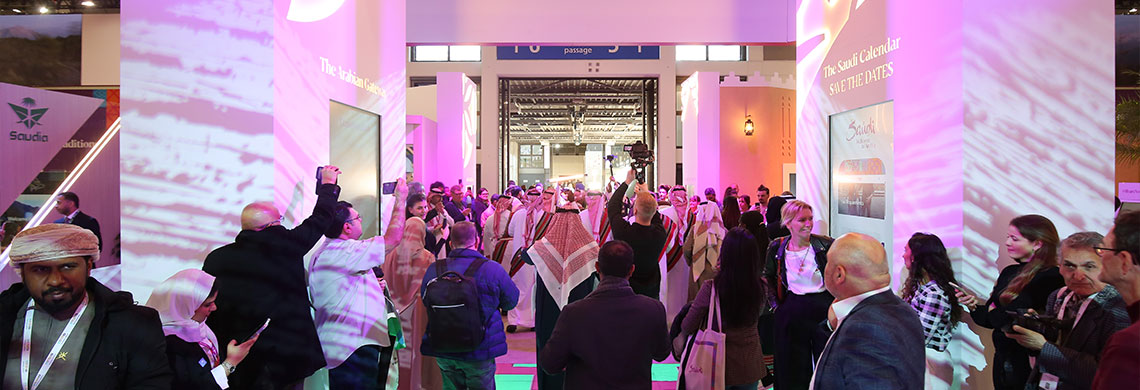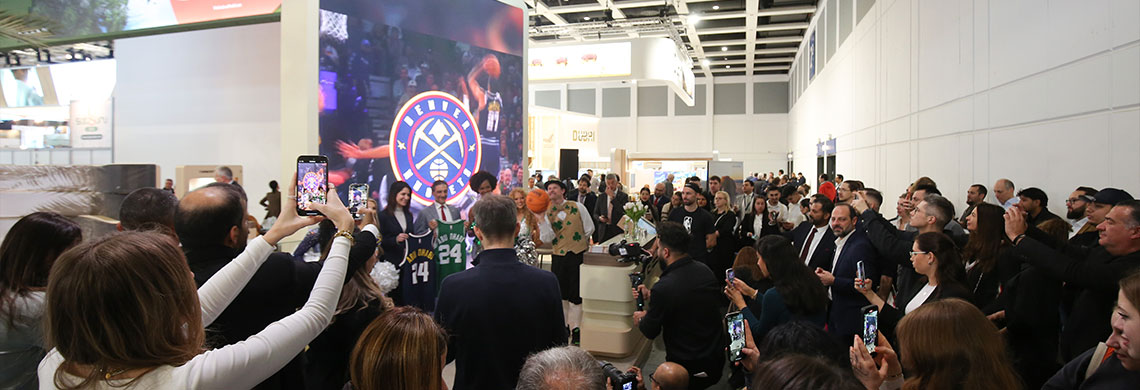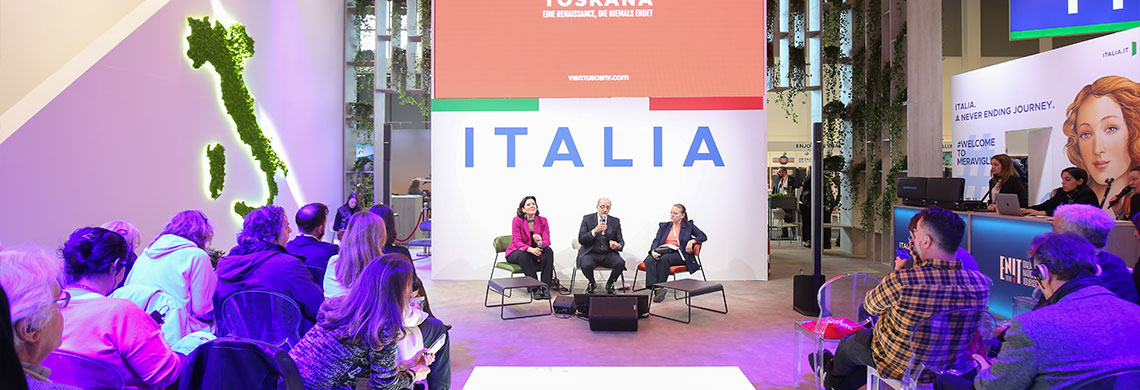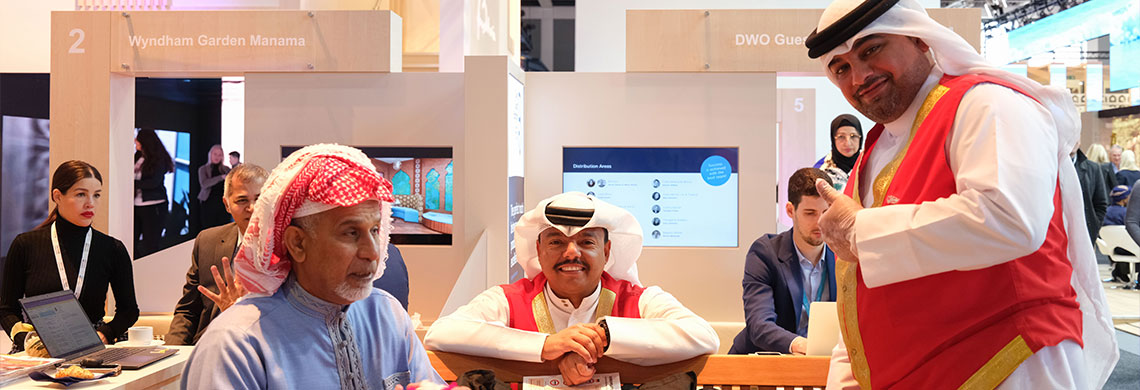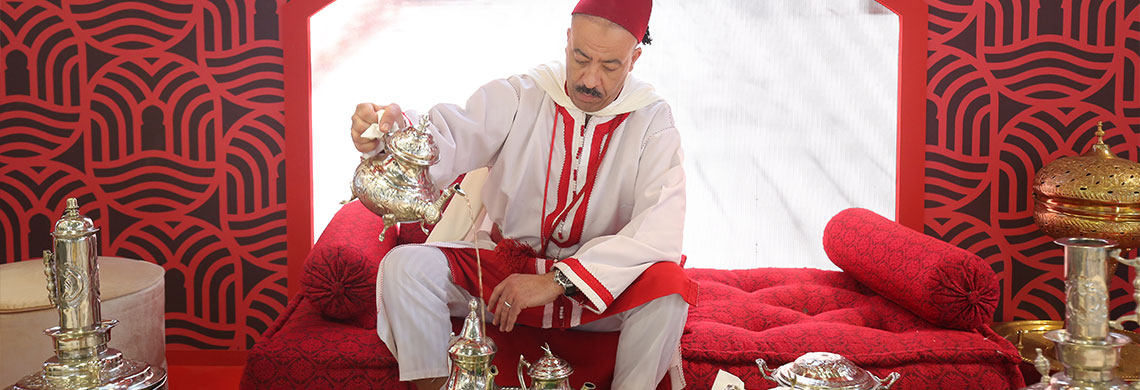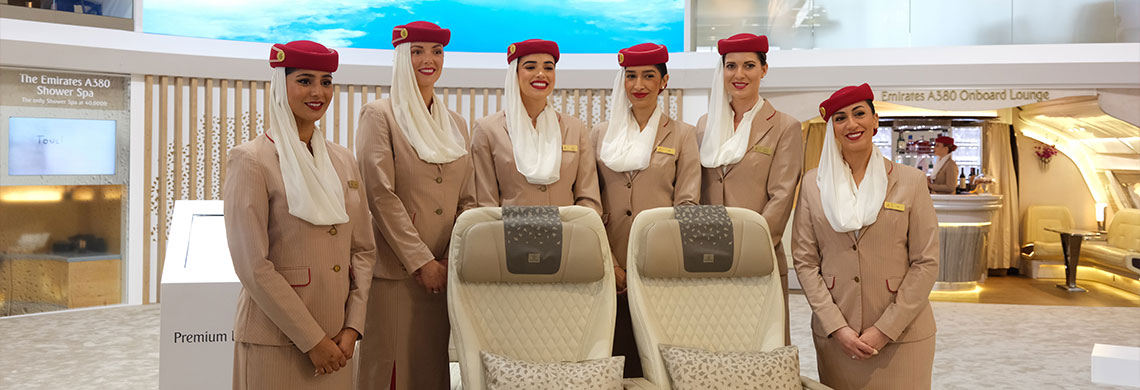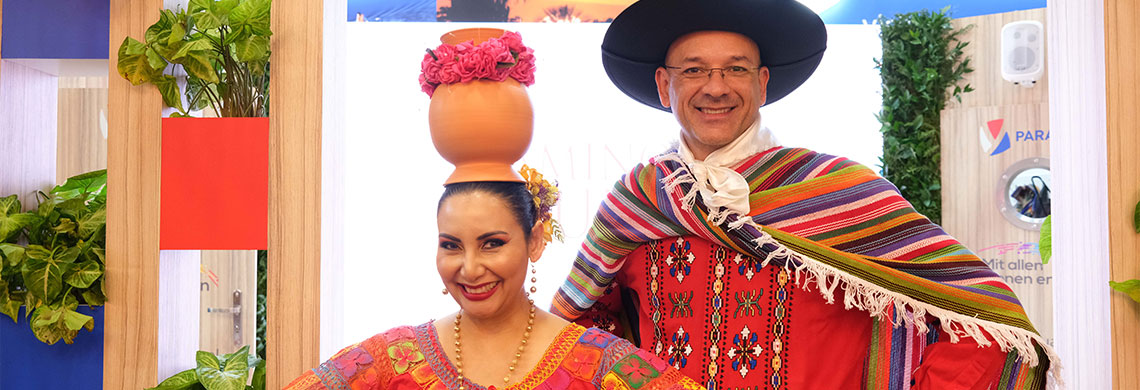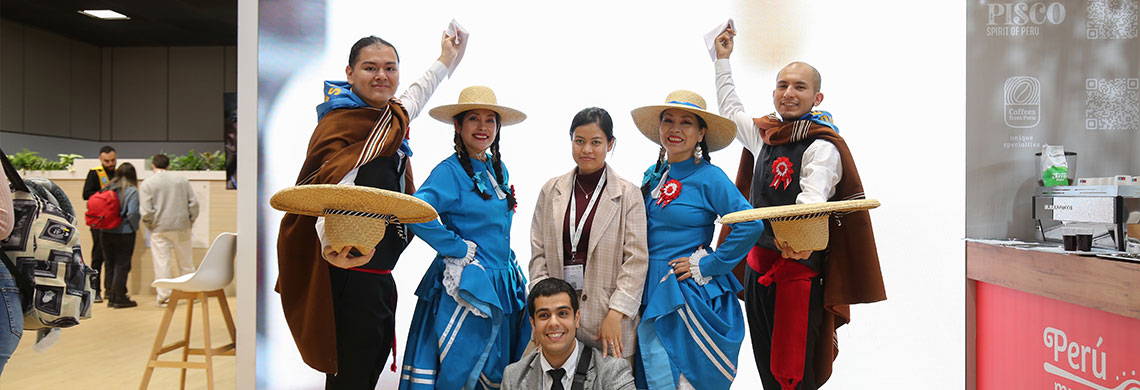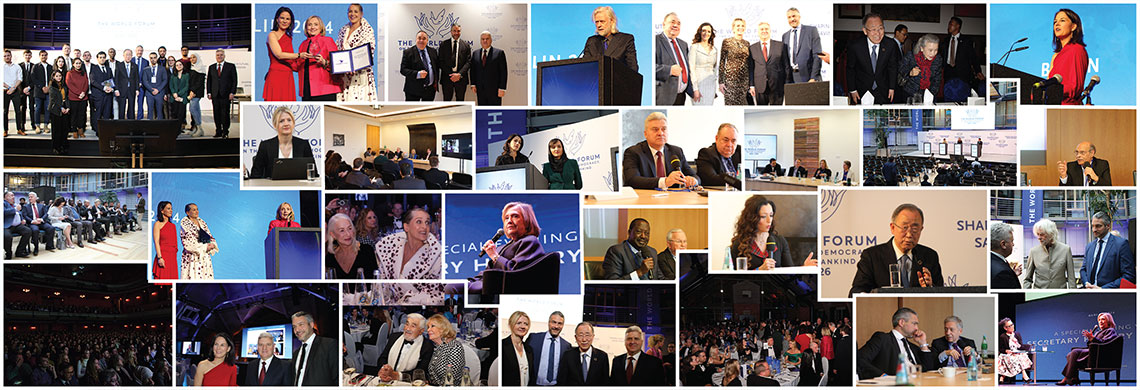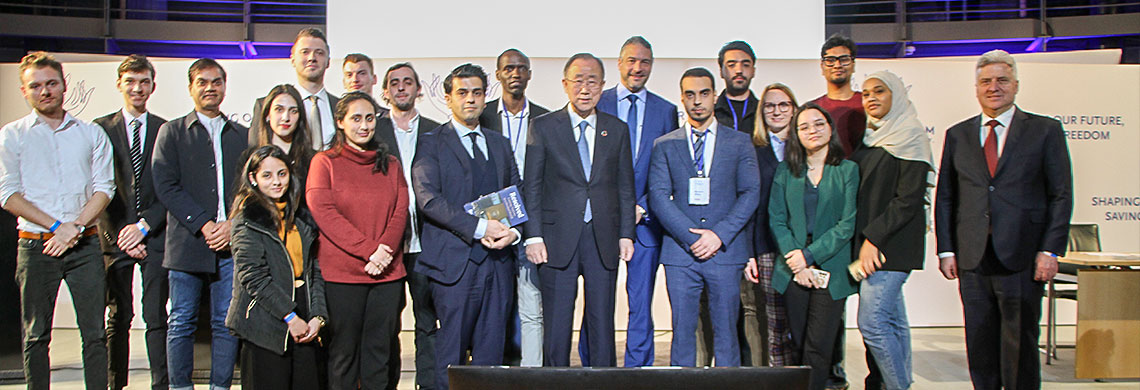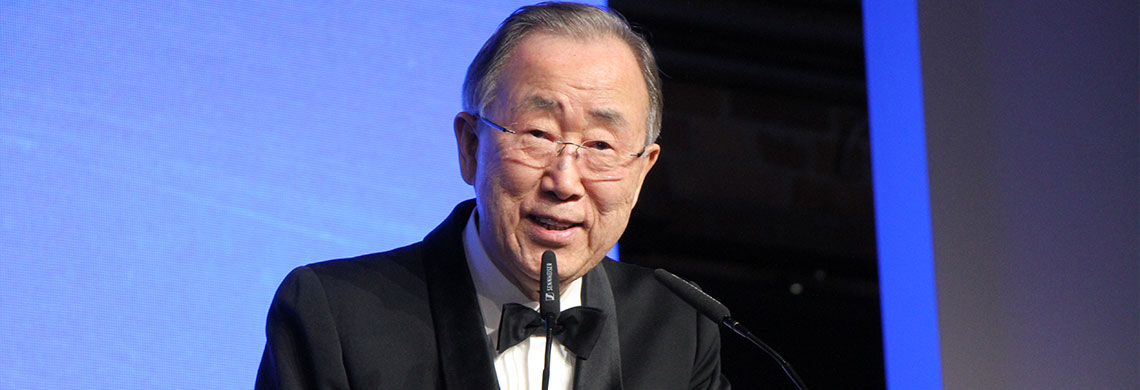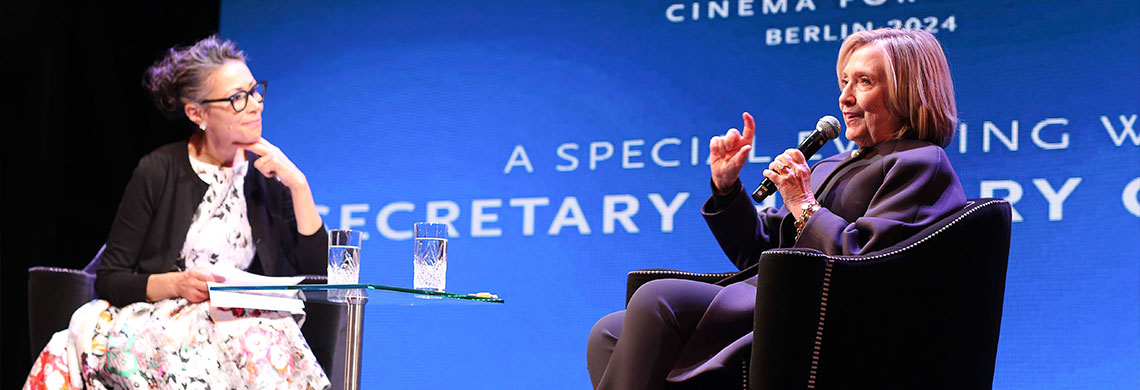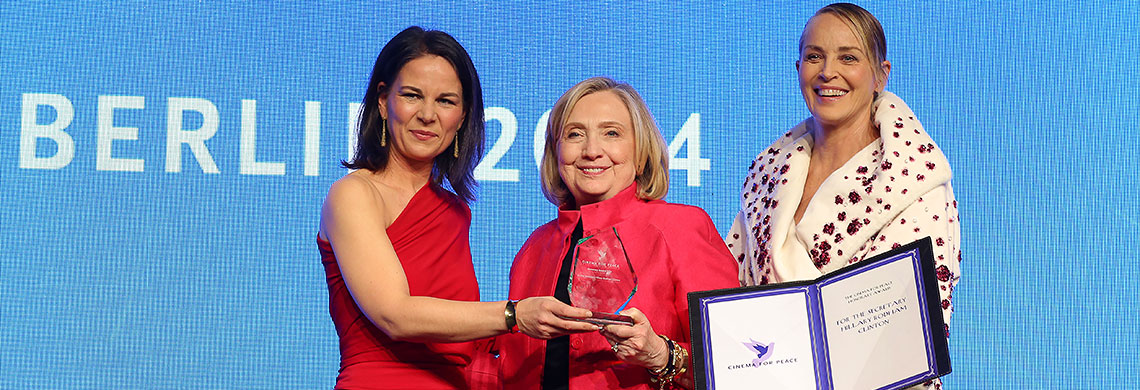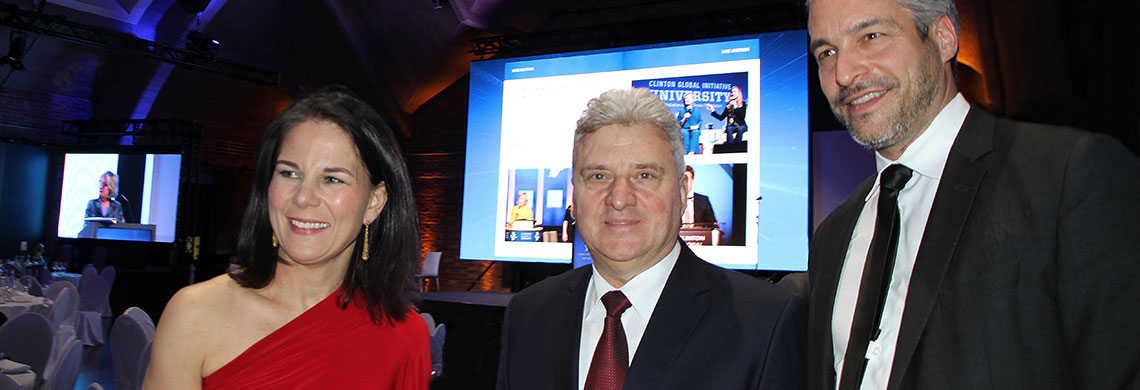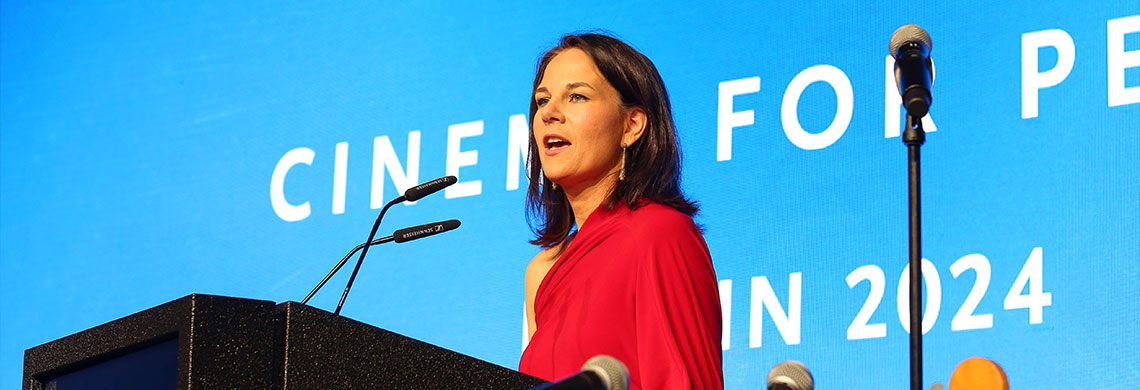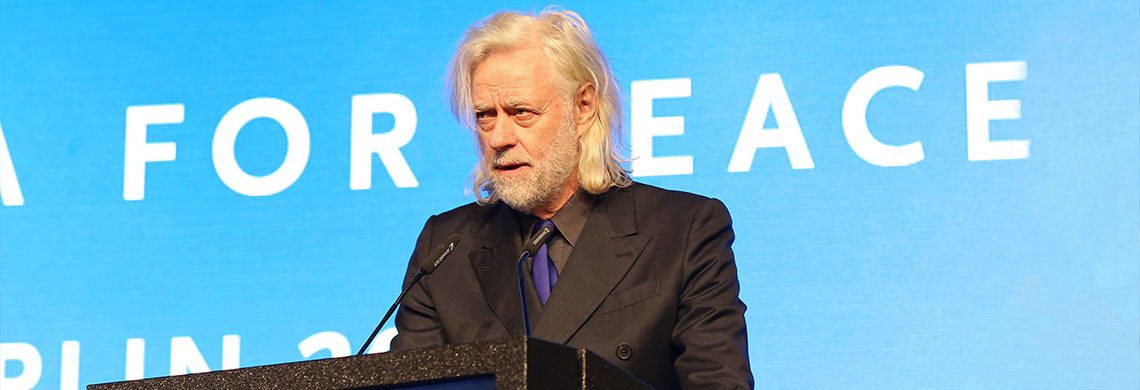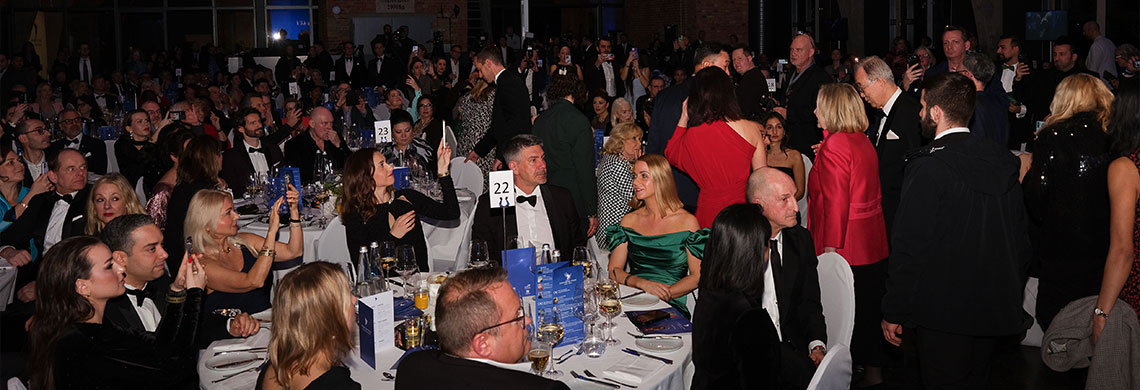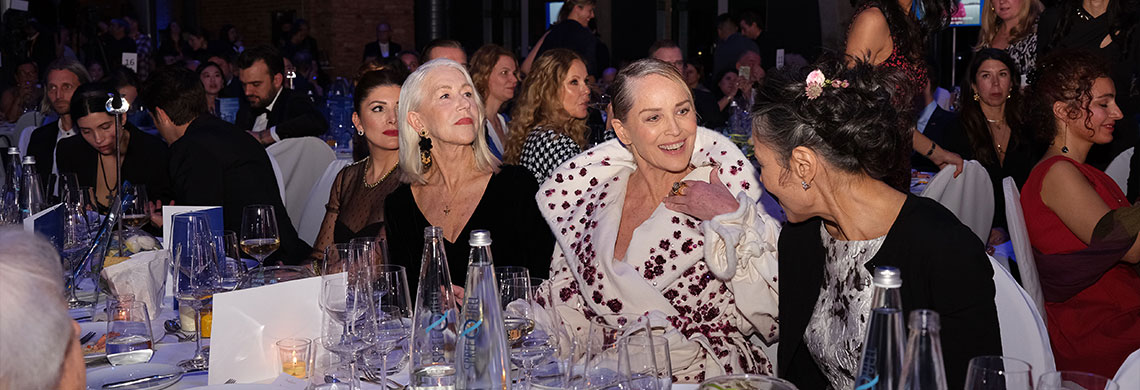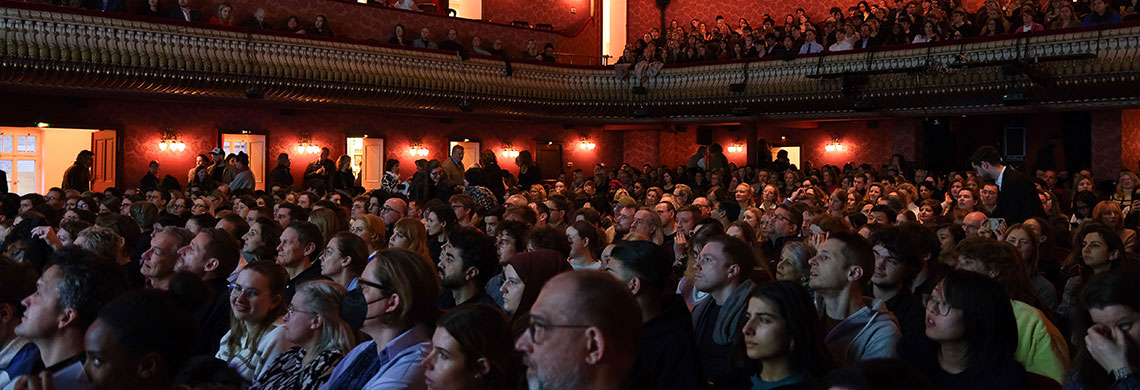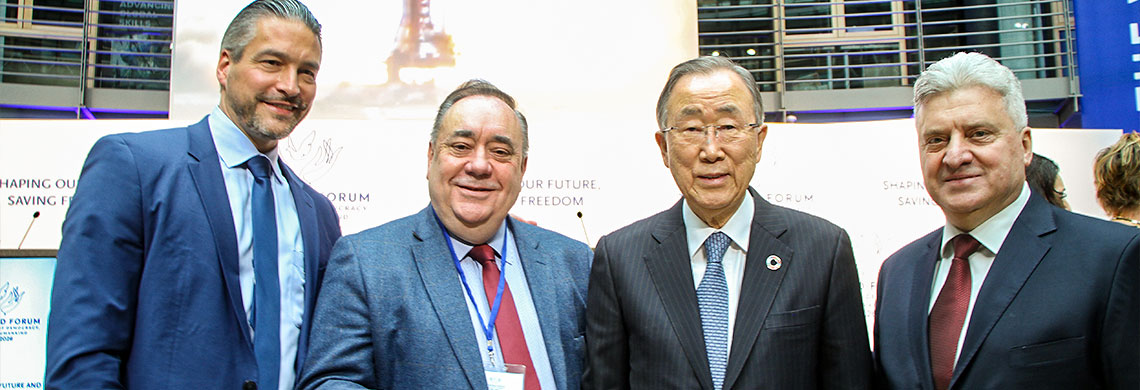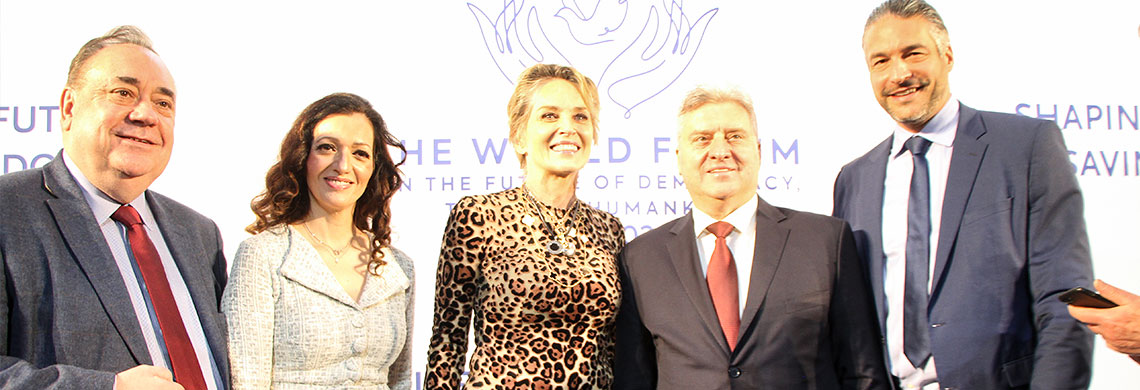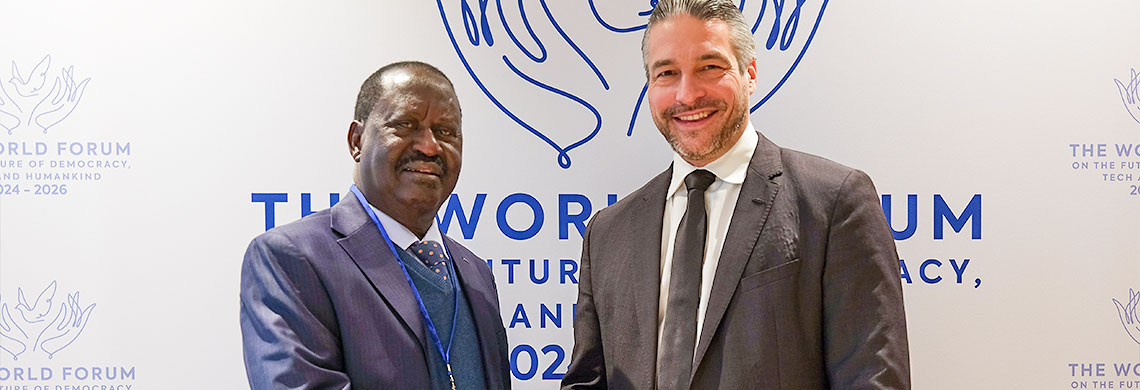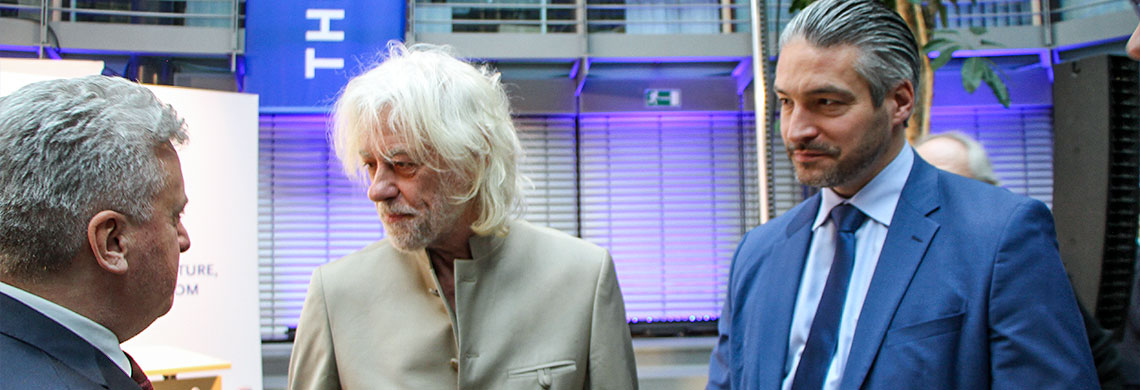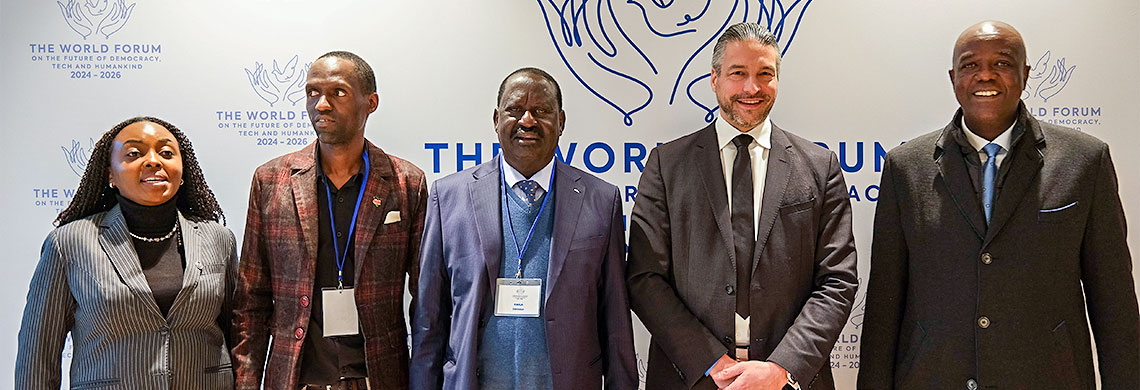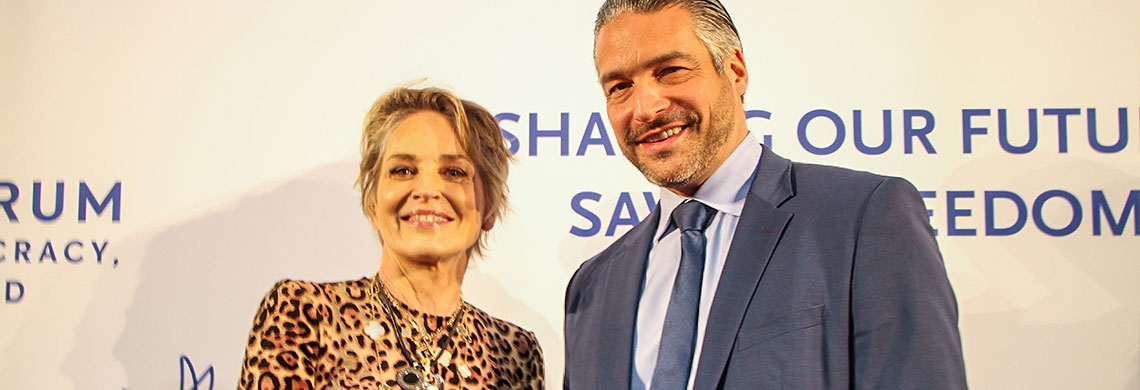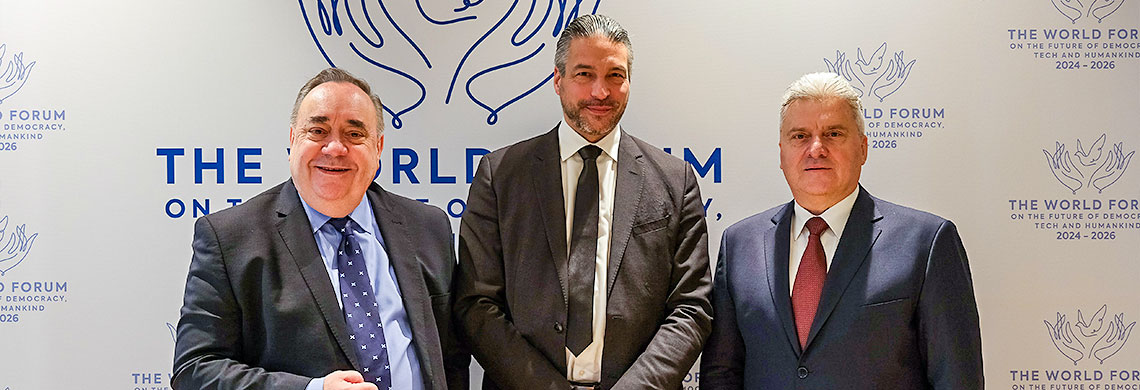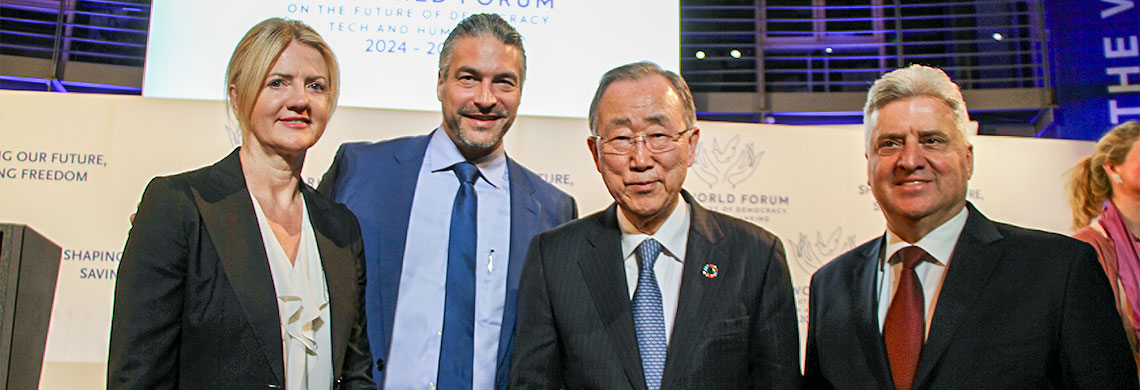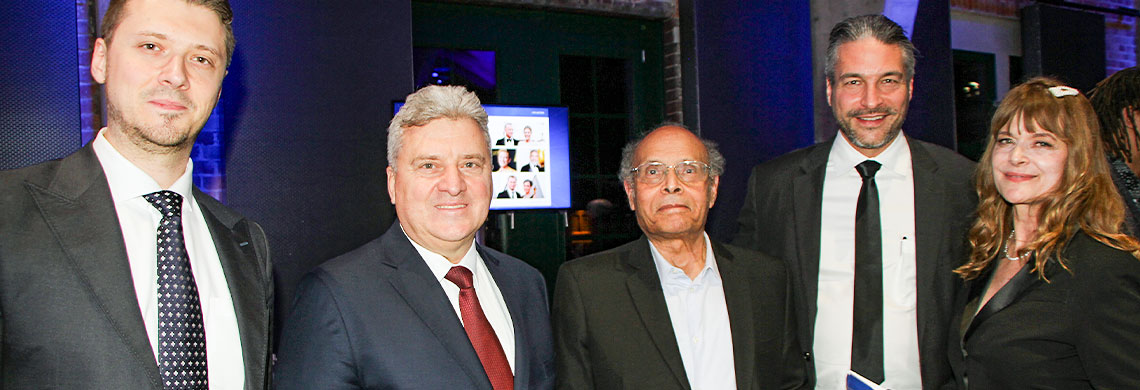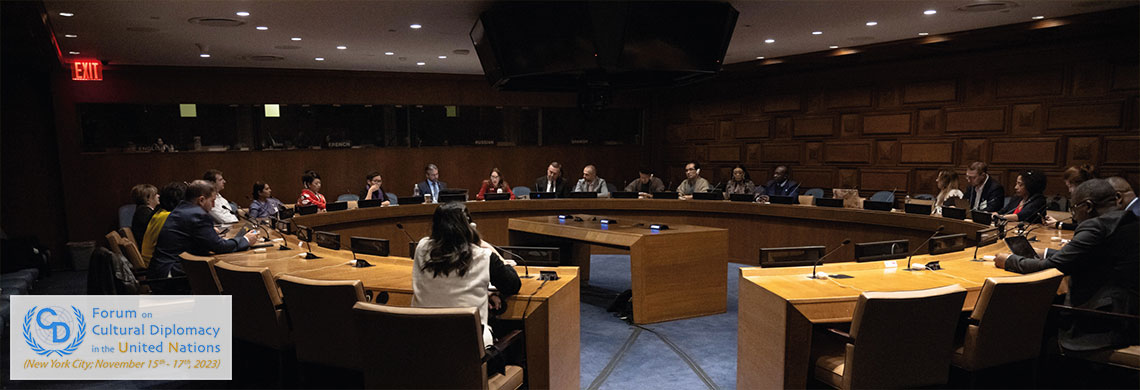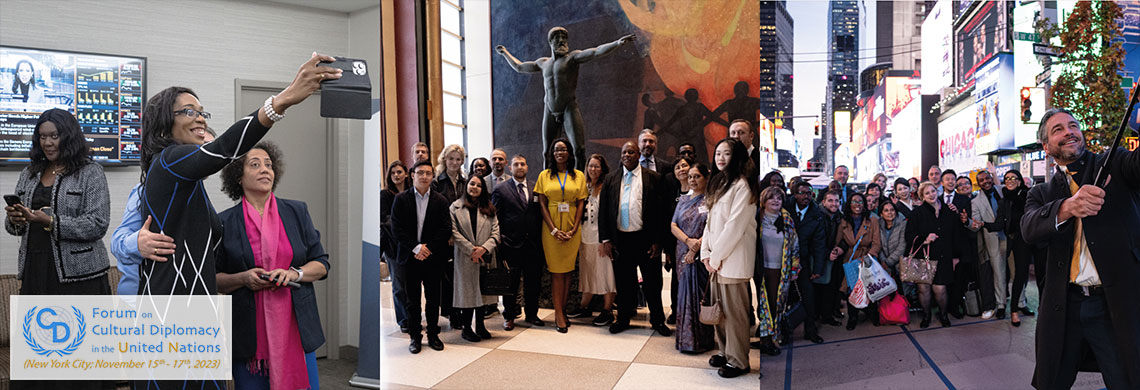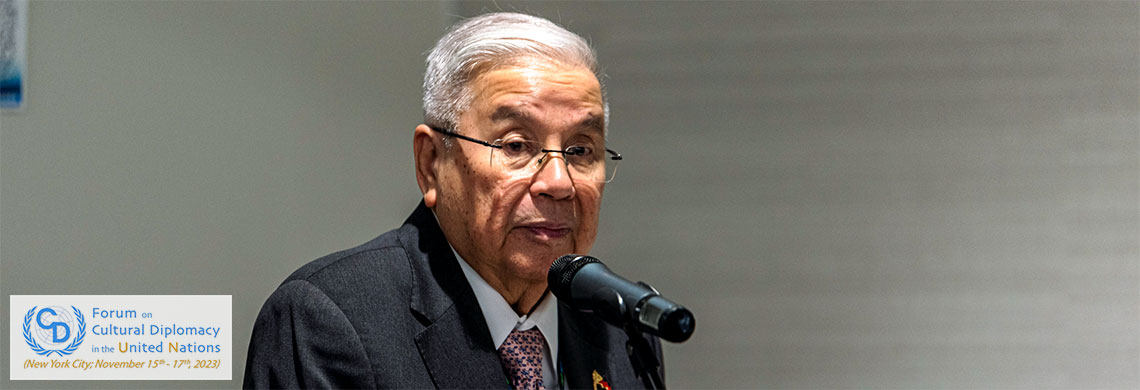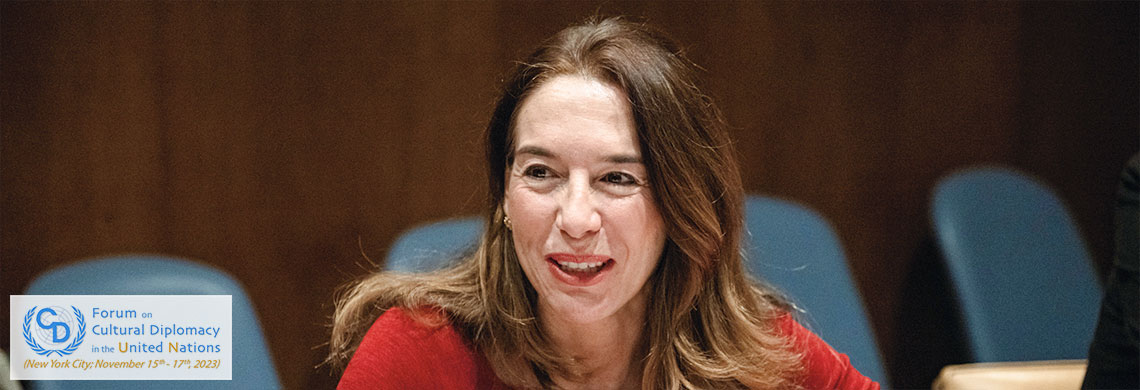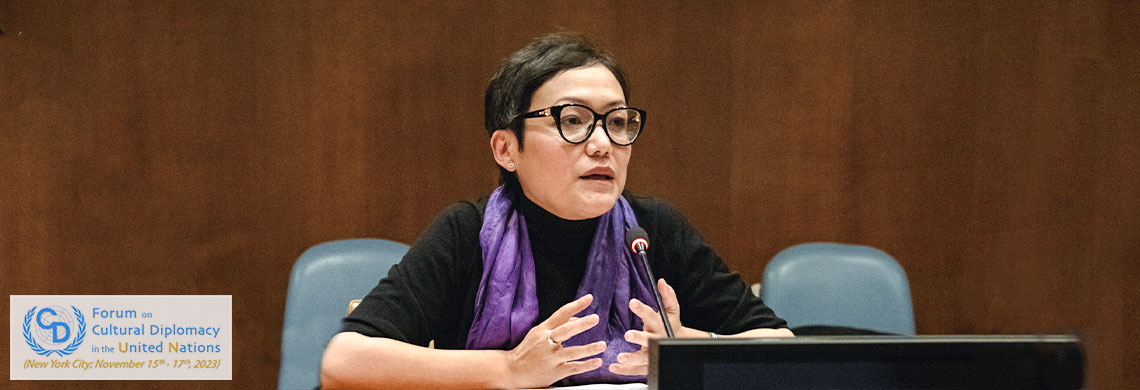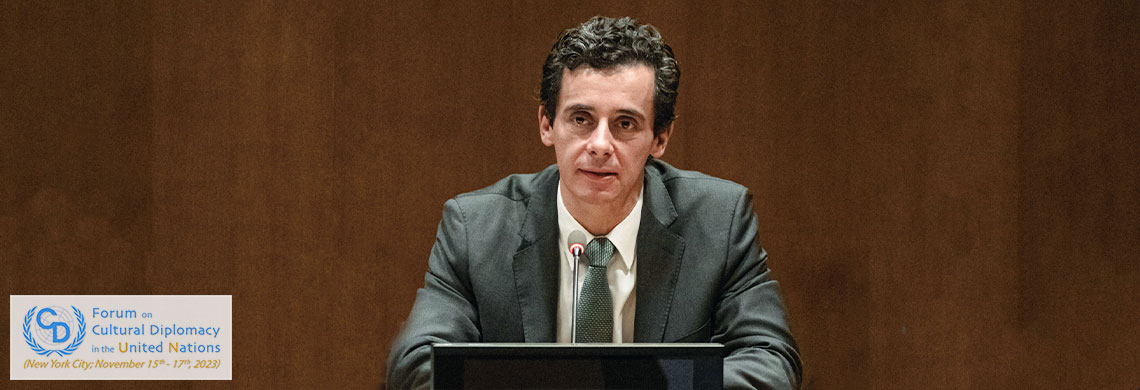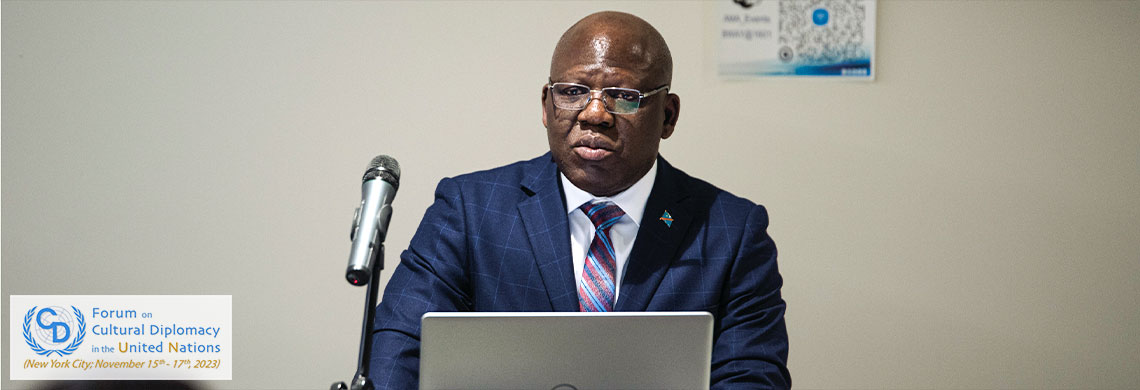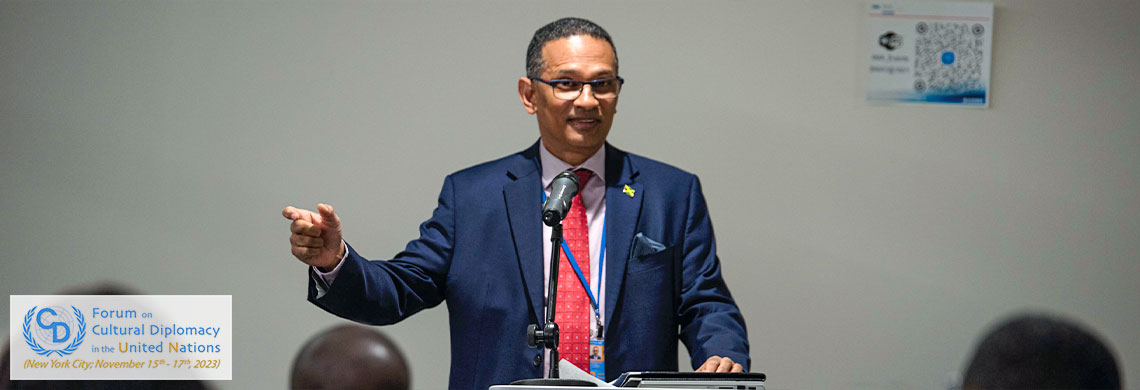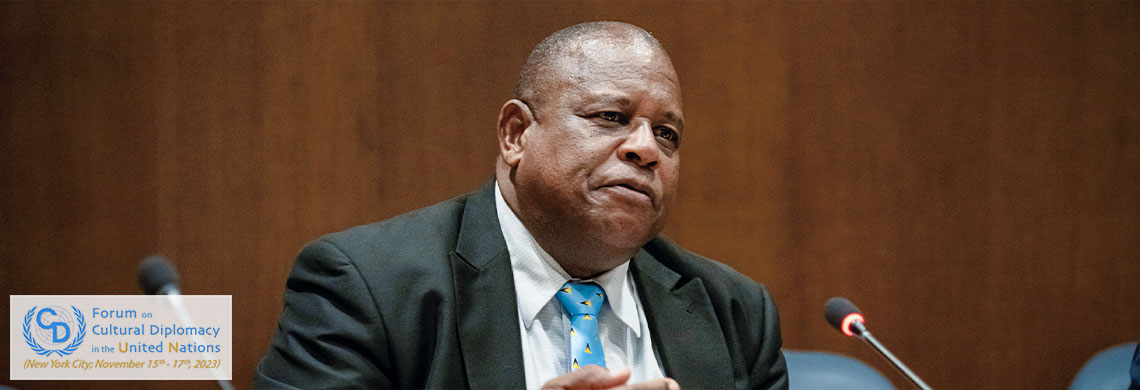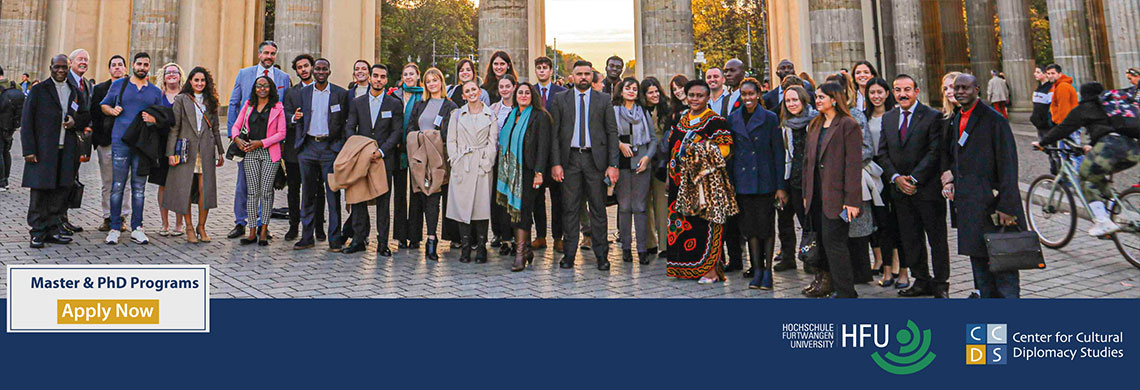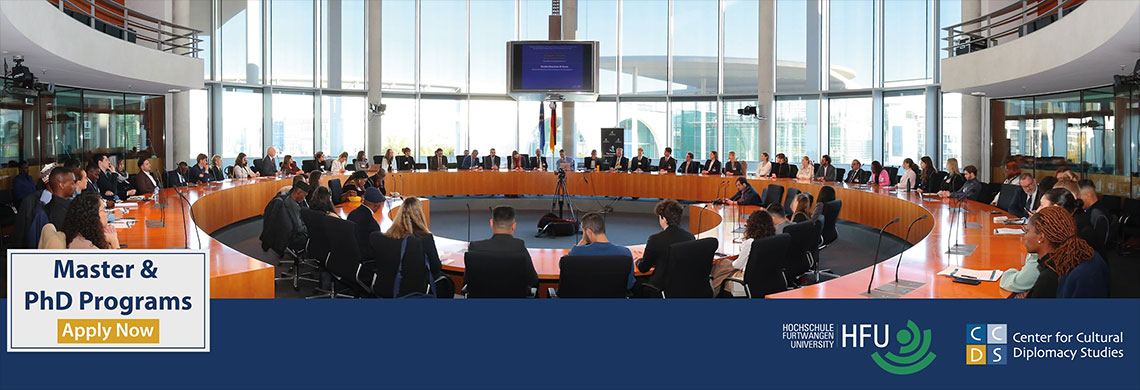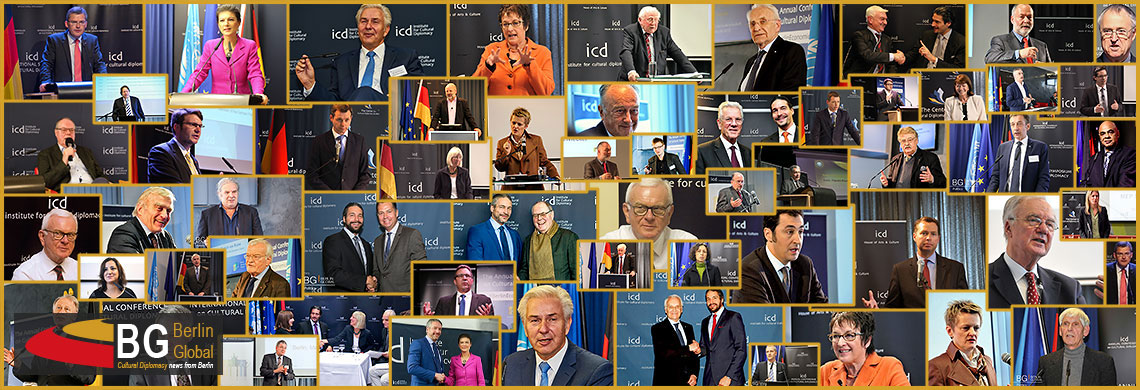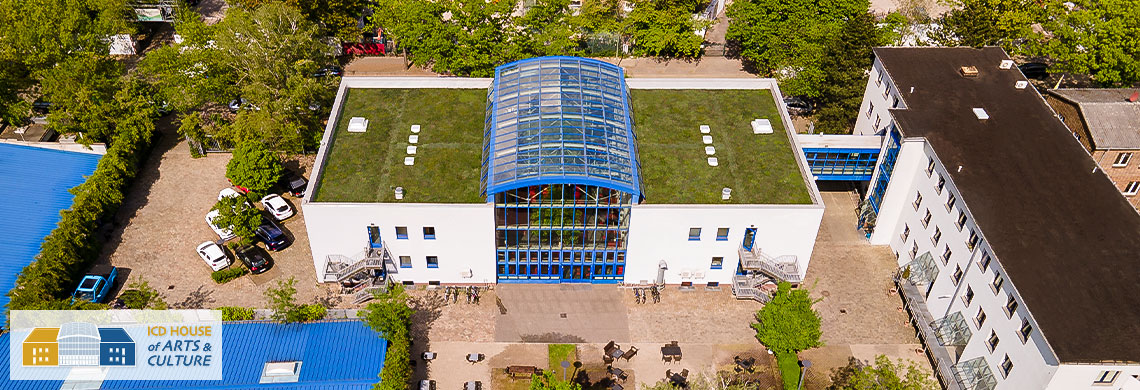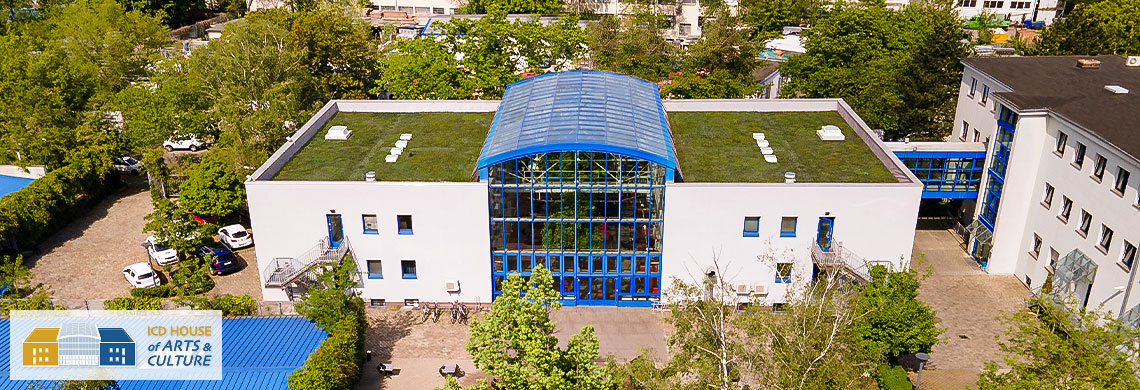Academy for Cultural Diplomacy
Cultural Diplomacy Research

Acts of Music as Cultural Diplomacy
In this section, readers can find a list of historical examples of successful acts of music as Cultural Diplomacy practiced by different actors since the end of the Second World War. Using different aspects of music in order to promote human rights, justice and global peace, these acts have throughout the years served as a catalyst promoting cooperation and easing conflicts.Below you will find a selection of examples of music as Cultural Diplomacy that have had successful and significant impacts or results:
-
1947
LLANGOLLEN INTERNATIONAL EISTEDDFOD MUSIC FESTIVAL
First International Music Festival Held in Wales
 The first ever international music festival to be held in Wales was held in 1947 by Harold Tudor, an officer of the British Council. A few years prior, Harold invited several members of governments' in-exile to attend a music and arts event in Bangor, Wales. Tudor was inspired by the success of the visit and the positive reception it gained, as illustrated to him by a letter he received from one of the attendees appreciating the way in which music can alleviate the effects of war. The 1947 International Eisteddfod was unanimously heralded as a great success with several acts from all over the globe performing and competing together. A poignant moment in the festival's history occurred in 1949, just four years after the end of the war, when a German choir took part in the festival. The choir was introduced to the stage by the compère as 'our friends from West Germany' and received a warm reception and a rapturous applause from the audience. To this day Llangollen International Musical Eisteddfod continues to showcase talent from all over the world. The Llangollen International Musical Eisteddfod acts as platform of cultural exchange in which participants and audience members can share in the joy of an international celebration of music and dance. By easing cross-cultural tensions it has proved to be successful in its mission to promote peace.
The first ever international music festival to be held in Wales was held in 1947 by Harold Tudor, an officer of the British Council. A few years prior, Harold invited several members of governments' in-exile to attend a music and arts event in Bangor, Wales. Tudor was inspired by the success of the visit and the positive reception it gained, as illustrated to him by a letter he received from one of the attendees appreciating the way in which music can alleviate the effects of war. The 1947 International Eisteddfod was unanimously heralded as a great success with several acts from all over the globe performing and competing together. A poignant moment in the festival's history occurred in 1949, just four years after the end of the war, when a German choir took part in the festival. The choir was introduced to the stage by the compère as 'our friends from West Germany' and received a warm reception and a rapturous applause from the audience. To this day Llangollen International Musical Eisteddfod continues to showcase talent from all over the world. The Llangollen International Musical Eisteddfod acts as platform of cultural exchange in which participants and audience members can share in the joy of an international celebration of music and dance. By easing cross-cultural tensions it has proved to be successful in its mission to promote peace. -
1950s and 1960s
THE US' JAZZ AMBASSADORS
The soul of a nation expressed through music
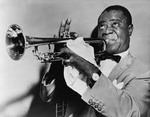 It was Adam Clayton Powell Jr., a US representative from Harlem, who first suggested that instead of sending symphonies and ballet groups abroad, the US should be sending jazz musicians. "This way" he said, "the world would get to see the real Americana''. Jazz was a lively and inspiring homegrown art form capable of captivating the world and, as novelist Ralph Ellison described it, an artistic counterpart to the American political system. The soloist can play anything he wants as long as he stays within the tempo and the chord changes — just as, in a democracy, the individual can say or do whatever he wants as long as he obeys the law. The Jazz Ambassador toured for many weeks, featuring some of the US' greatest jazz musicians such as Dizzie Gillespie (1956), Louis Armstrong (1961) and Benny Goodman (1962). At a time when America's image was tarnished across the world, the heart and soul of the nation was translated into a rhythm the rest of the world could understand and appreciate. From the dusty streets of Cairo to the very heart of the Soviet Union, American Jazz Ambassadors would set out to prove that their nation was anything but ''culturally barbaric'', as was often claimed in Soviet propaganda at the time.
It was Adam Clayton Powell Jr., a US representative from Harlem, who first suggested that instead of sending symphonies and ballet groups abroad, the US should be sending jazz musicians. "This way" he said, "the world would get to see the real Americana''. Jazz was a lively and inspiring homegrown art form capable of captivating the world and, as novelist Ralph Ellison described it, an artistic counterpart to the American political system. The soloist can play anything he wants as long as he stays within the tempo and the chord changes — just as, in a democracy, the individual can say or do whatever he wants as long as he obeys the law. The Jazz Ambassador toured for many weeks, featuring some of the US' greatest jazz musicians such as Dizzie Gillespie (1956), Louis Armstrong (1961) and Benny Goodman (1962). At a time when America's image was tarnished across the world, the heart and soul of the nation was translated into a rhythm the rest of the world could understand and appreciate. From the dusty streets of Cairo to the very heart of the Soviet Union, American Jazz Ambassadors would set out to prove that their nation was anything but ''culturally barbaric'', as was often claimed in Soviet propaganda at the time. -
1956
EUROVISION SONG CONTEST
Contest for the most Popular Song in Europe
 The idea of creating a European song contest emerged for the first time in 1950s as the countries of Europe attempted to rebuild and reintegrate following World War II. Marcel Bezencon, director general of Swiss television and the chairman of the European Broadcasting Union, proposed to establish a TV song contest that would be broadcast to all European countries. The first Eurovision contest took place in 1956, in Lugano, Switzerland; it consisted of only seven countries, performing two songs each. From such optimistic beginnings however, Eurovision rapidly expanded, to the extent that 2014's Eurovision will contain over 30 different participants. Amongst the numerous rules of the contest one of the most important, from a Cultural Diplomacy standpoint, is that it is not possible to vote for an artist originating from the same country as the voter. This leads to an emphasis on appreciating songs from other cultures, rather than simply inciting competition between representatives of particular countries.
The idea of creating a European song contest emerged for the first time in 1950s as the countries of Europe attempted to rebuild and reintegrate following World War II. Marcel Bezencon, director general of Swiss television and the chairman of the European Broadcasting Union, proposed to establish a TV song contest that would be broadcast to all European countries. The first Eurovision contest took place in 1956, in Lugano, Switzerland; it consisted of only seven countries, performing two songs each. From such optimistic beginnings however, Eurovision rapidly expanded, to the extent that 2014's Eurovision will contain over 30 different participants. Amongst the numerous rules of the contest one of the most important, from a Cultural Diplomacy standpoint, is that it is not possible to vote for an artist originating from the same country as the voter. This leads to an emphasis on appreciating songs from other cultures, rather than simply inciting competition between representatives of particular countries. -
1958
INTERNATONAL TCHAIKOVSKY PIANO COMPETITION
Van Cliburn Wins the First International Tchaikovsky Piano Competition
 Van Cliburn was an American pianist who won the finals of the first International Tchaikovsky Piano Concert in Moscow 1958. Van Cliburn had been playing piano his entire life and it was at the age of 23 when he was announced as the winner of the Tchaikovsky competition. His performance earned him a standing ovation that lasted for eight minutes, and when it was time to announce the winner, the judges were obliged to ask permission from Soviet leader Nikita Khrushchev, as to whether or not the first prize could be gifted to an American. When asked, Khrushchev replied, "Is he the best? Then give him the prize". When Cliburn came home, he was welcomed by a ticker-tape parade in New York City, the only time such an honor has been bestowed upon a classical musician. In his speech of gratitude he spoke of the honor being bestowed on not just him but on classical music in general. Cliburn winning the prize was an important event during the Cold War, an event that demonstrated the potential for cross cultural understanding and one that lived long in people's memories. Many years later, in 1987, Cliburn was invited to perform at the White House for President Ronald Reagan and the Soviet President Mikhail Gorbachev. He later received both the Presidential Medal of Freedom in the US and the Russian Order of Friendship. Following his death, The Wall Street Journal hailed Cliburn as a "cultural hero" who "rocketed to unheard-of stardom for a classical musician in the U.S." The Associated Press called him "the rare classical musician to enjoy rock star status". The success of Cliburn gave a clear demonstration of how culture and music can ease tensions in even the most volatile of situations
Van Cliburn was an American pianist who won the finals of the first International Tchaikovsky Piano Concert in Moscow 1958. Van Cliburn had been playing piano his entire life and it was at the age of 23 when he was announced as the winner of the Tchaikovsky competition. His performance earned him a standing ovation that lasted for eight minutes, and when it was time to announce the winner, the judges were obliged to ask permission from Soviet leader Nikita Khrushchev, as to whether or not the first prize could be gifted to an American. When asked, Khrushchev replied, "Is he the best? Then give him the prize". When Cliburn came home, he was welcomed by a ticker-tape parade in New York City, the only time such an honor has been bestowed upon a classical musician. In his speech of gratitude he spoke of the honor being bestowed on not just him but on classical music in general. Cliburn winning the prize was an important event during the Cold War, an event that demonstrated the potential for cross cultural understanding and one that lived long in people's memories. Many years later, in 1987, Cliburn was invited to perform at the White House for President Ronald Reagan and the Soviet President Mikhail Gorbachev. He later received both the Presidential Medal of Freedom in the US and the Russian Order of Friendship. Following his death, The Wall Street Journal hailed Cliburn as a "cultural hero" who "rocketed to unheard-of stardom for a classical musician in the U.S." The Associated Press called him "the rare classical musician to enjoy rock star status". The success of Cliburn gave a clear demonstration of how culture and music can ease tensions in even the most volatile of situations -
1963
THE PHILIPPINE MADRIGALSINGERS
Promoting cultural diversity, intercultural dialogue and a culture of peace
 The Madrigal Singers were organized in 1963 by the National Artist Professor Andrea Veneracion. The group is composed of students, faculty and alumni from all the different colleges of the University of the Philippines (UP). The choir is pretty famous as it consistently won all the prizes in the world's most famous choral competitions: Arezzo and Gorizia in Italy, Marktoberdorf in Germany, Spittal in Austria, Neuchatel in Switzerland, Tours in France, Varna in Bulgaria, Debrecen in Hungary, Cantonigros, Tolosa and Torrevieja in Spain. They hold the distinction of being the first choir in the world to win the European Grand Prix for Choral Singing twice (1997 and 2007). The Madrigal Singers had quite a far reaching influence on the Philippine and Asian choral scene. The group was even recognized in 2009 by the UNESCO as Artists for Peace for "putting fame and influence at the service of UNESCO's ideals and efforts to promote cultural diversity, intercultural dialogue and a culture of peace".
The Madrigal Singers were organized in 1963 by the National Artist Professor Andrea Veneracion. The group is composed of students, faculty and alumni from all the different colleges of the University of the Philippines (UP). The choir is pretty famous as it consistently won all the prizes in the world's most famous choral competitions: Arezzo and Gorizia in Italy, Marktoberdorf in Germany, Spittal in Austria, Neuchatel in Switzerland, Tours in France, Varna in Bulgaria, Debrecen in Hungary, Cantonigros, Tolosa and Torrevieja in Spain. They hold the distinction of being the first choir in the world to win the European Grand Prix for Choral Singing twice (1997 and 2007). The Madrigal Singers had quite a far reaching influence on the Philippine and Asian choral scene. The group was even recognized in 2009 by the UNESCO as Artists for Peace for "putting fame and influence at the service of UNESCO's ideals and efforts to promote cultural diversity, intercultural dialogue and a culture of peace". -
1969
WOODSTOCK FESTIVAL
Woodstock Festival Epitomized the 1960's Principles of Peace and Love
 Woodstock Music Festival was billed as '3 days of Peace & Music' and was held in the town of Bethel, New York. Such was the popularity of the sentiment that more than double the expected number of festivalgoers attended, eventually resulting in the event becoming a free festival. A festival of such magnitude had never taken place before but ran peacefully, with festivalgoers contributing to maintaining a sense of social harmony and peace. The legacy of the festival is maintained in popular culture through the famous 'Woodstock' documentary. The Woodstock Festival of 1969 is widely considered the pinnacle of the 1960's zeitgeist advocating freedom of expression and love. Music is a powerful tool for uniting people through cultural exchange; this is perfectly illustrated by the shared experience of the festivalgoers at Woodstock. The Woodstock Festival remains a symbol of the principles of love and peace embodied by the late 1960's in the hearts and minds of many.
Woodstock Music Festival was billed as '3 days of Peace & Music' and was held in the town of Bethel, New York. Such was the popularity of the sentiment that more than double the expected number of festivalgoers attended, eventually resulting in the event becoming a free festival. A festival of such magnitude had never taken place before but ran peacefully, with festivalgoers contributing to maintaining a sense of social harmony and peace. The legacy of the festival is maintained in popular culture through the famous 'Woodstock' documentary. The Woodstock Festival of 1969 is widely considered the pinnacle of the 1960's zeitgeist advocating freedom of expression and love. Music is a powerful tool for uniting people through cultural exchange; this is perfectly illustrated by the shared experience of the festivalgoers at Woodstock. The Woodstock Festival remains a symbol of the principles of love and peace embodied by the late 1960's in the hearts and minds of many. -
1969
JOHN LENNON AND YOKO ONO'S ''BED-IN FOR PEACE''
Hotel Room Peace Campaign in the Midst of the Vietnam War
 Knowing that their wedding on March 20th, 1969 would draw huge media attention, the celebrity couple staged a weeklong sit-in for world peace from their honeymoon suite in the Amsterdam Hilton hotel. Reporters from all across the globe were invited to attend the event, at first not knowing what to expect. However when the pair began their alternative protest, refusing to leave their bed or cut their hair, the world's media spread the interviews, photos and video material of the event and made headlines worldwide. Whilst the 'Bed-Ins' did not achieve much in the way of ending the Vietnam War or bringing about world peace in general, it did succeed in raising global awareness and ultimately resulted in the creation of the famous 'Give Peace a Chance', the song which then went on to become the anthem of the American anti-Vietnam movement. To this day, the concept of 'Bed-Ins' remains ingrained in popular culture continuing to be re-interpreted and re-used as symbol of peace.
Knowing that their wedding on March 20th, 1969 would draw huge media attention, the celebrity couple staged a weeklong sit-in for world peace from their honeymoon suite in the Amsterdam Hilton hotel. Reporters from all across the globe were invited to attend the event, at first not knowing what to expect. However when the pair began their alternative protest, refusing to leave their bed or cut their hair, the world's media spread the interviews, photos and video material of the event and made headlines worldwide. Whilst the 'Bed-Ins' did not achieve much in the way of ending the Vietnam War or bringing about world peace in general, it did succeed in raising global awareness and ultimately resulted in the creation of the famous 'Give Peace a Chance', the song which then went on to become the anthem of the American anti-Vietnam movement. To this day, the concept of 'Bed-Ins' remains ingrained in popular culture continuing to be re-interpreted and re-used as symbol of peace. -
1969
NOBEL PEACE PRIZE CONCERT
Melting pot of music
 The Nobel Peace Prize Concerts started in 1994, exactly one day after Alfred Nobel's death with the main purpose of honoring the Nobel Peace Prize laureate. The concert attracts major global attention as it receives around 6.500-7.000 guests and is broadcast in over 100 countries. The concert features a broad selection of talented artists from around the world. The concerts highlights the peace prize winner's work, whilst featuring an interview with the winner and the winner giving a speech during the concert.
The Nobel Peace Prize Concerts started in 1994, exactly one day after Alfred Nobel's death with the main purpose of honoring the Nobel Peace Prize laureate. The concert attracts major global attention as it receives around 6.500-7.000 guests and is broadcast in over 100 countries. The concert features a broad selection of talented artists from around the world. The concerts highlights the peace prize winner's work, whilst featuring an interview with the winner and the winner giving a speech during the concert.
The Nobel Peace Prize Concert is seen as an example of cultural diplomacy as the concert is a virtual melting pot of melodies, ranging in genre from classical to rap. It brings further attention to the winner of the Nobel Peace Prize and is broadcast over 100 countries; bringing people together through music. -
1971
RODRIGUEZ'S 'COLD FACT'
Rodriguez's music during the Anti-apartheid Movement in South Africa
 In 1970, American singer/songwriter Sixto Rodriguez released his debut album 'Cold Fact' which failed to achieve notable success in the USA. However unbeknownst to him, the release of 'Cold Fact' in South Africa in 1971 prompted an extremely positive reception, gaining extensive airplay and selling thousands. Many people from South Africa cite Rodriguez's music as incredibly poignant in their struggle against Apartheid. Rodriguez's lyrics which rallied against corrupt governmental systems influenced South African musicians to release their own anti-apartheid songs, uniting the citizens of South Africa in their struggle. It wasn't until 1997 that Rodriguez became aware of his fame abroad, prompting him to go on tour in South Africa, playing six sell-out shows to thousands of fans. 'Cold Fact' became the soundtrack to the people's discontent with the system of racial segregation in South Africa. Rodriguez's music became integral to the struggle for unity and equality, contributing strongly to the cultural identity of South Africa. His music served to mitigate the conflict in South Africa and united the Anti-Apartheid Movement.
In 1970, American singer/songwriter Sixto Rodriguez released his debut album 'Cold Fact' which failed to achieve notable success in the USA. However unbeknownst to him, the release of 'Cold Fact' in South Africa in 1971 prompted an extremely positive reception, gaining extensive airplay and selling thousands. Many people from South Africa cite Rodriguez's music as incredibly poignant in their struggle against Apartheid. Rodriguez's lyrics which rallied against corrupt governmental systems influenced South African musicians to release their own anti-apartheid songs, uniting the citizens of South Africa in their struggle. It wasn't until 1997 that Rodriguez became aware of his fame abroad, prompting him to go on tour in South Africa, playing six sell-out shows to thousands of fans. 'Cold Fact' became the soundtrack to the people's discontent with the system of racial segregation in South Africa. Rodriguez's music became integral to the struggle for unity and equality, contributing strongly to the cultural identity of South Africa. His music served to mitigate the conflict in South Africa and united the Anti-Apartheid Movement. -
1976
ROCK AGAINST RACISM
Superstars sing together to stop extremism
 As a response to racial tensions, prejudice and increasing extremism towards minorities, world-renowned rock starts rallied together in 1976 to kick start the "Rock against Racism" campaign in the United Kingdom. The initiative brought together artists from across all genres, with pop, rock, punk and reggae stars all taking to the stage to present a message of solidarity, tolerance and understanding. The common aim was to create concerts with anti-racist themes and values in order to encourage younger generations to reject racism from their society. The campaign was established in order to give a strong and significant response to a proliferation of racial conflict and to the presence of several nationalist and racist groups such as the National Front and its legacy remains embedded in British society, indeed it paved the way for other musical, cultural events such as LiveAid.
As a response to racial tensions, prejudice and increasing extremism towards minorities, world-renowned rock starts rallied together in 1976 to kick start the "Rock against Racism" campaign in the United Kingdom. The initiative brought together artists from across all genres, with pop, rock, punk and reggae stars all taking to the stage to present a message of solidarity, tolerance and understanding. The common aim was to create concerts with anti-racist themes and values in order to encourage younger generations to reject racism from their society. The campaign was established in order to give a strong and significant response to a proliferation of racial conflict and to the presence of several nationalist and racist groups such as the National Front and its legacy remains embedded in British society, indeed it paved the way for other musical, cultural events such as LiveAid. -
1981
SEATTLE PEACE CONCERTS
"No speeches, No Preaches"
 The Seattle Peace Concerts started in 1981 and is Seattle's largest and longest running free park concert series. The concerts are non-political and non-religious in nature. Their motto is "no speeches, no preaches". The concerts are held in order to celebrate the peace between us and the oneness of all life. The events are all family friendly, for free and open to the public, thus to ensure that there are no borders and everybody who wants to join can attend. The Seattle Peace Concerts can be seen as an example of cultural diplomacy in practice, as it uses music as a vehicle to create peace. The organiser of these concerts said that humankind is all bound together, all things connect, so we better make the best of it.
The Seattle Peace Concerts started in 1981 and is Seattle's largest and longest running free park concert series. The concerts are non-political and non-religious in nature. Their motto is "no speeches, no preaches". The concerts are held in order to celebrate the peace between us and the oneness of all life. The events are all family friendly, for free and open to the public, thus to ensure that there are no borders and everybody who wants to join can attend. The Seattle Peace Concerts can be seen as an example of cultural diplomacy in practice, as it uses music as a vehicle to create peace. The organiser of these concerts said that humankind is all bound together, all things connect, so we better make the best of it. -
April 24, 1982
'EIN BISSCHEN FRIEDEN' WINS EUROVISION SONG CONTEST
Song promoting world peace wins Eurovision song contest
 Written by German Eurovision-songwriting duo Ralph Siegel and Bernard Meinunger and performed by Nicole, the song 'Ein bisschen Frieden' ('A little bit of peace') won the 1982 Eurovision Song Contest. The lyrics of the song advocated world peace and hope, with Nicole performing the song in German, English, French and Dutch worldwide. The song was later released in Danish, Italian and Russian, with special German-English-Dutch and German-English-Italian combinations being released also. The song gained chart success in many countries and achieved the Eurovision's largest winning margin for the time, reaching a record margin of 61 points. The global success of the song performed at the Eurovision Song Contest, a platform for cultural exchange, highlighted a cross-cultural wish for peace. The performance (and the later release) of the song in various languages made the song's lyrics accessible to people from various countries, promoting unity between cultures.
Written by German Eurovision-songwriting duo Ralph Siegel and Bernard Meinunger and performed by Nicole, the song 'Ein bisschen Frieden' ('A little bit of peace') won the 1982 Eurovision Song Contest. The lyrics of the song advocated world peace and hope, with Nicole performing the song in German, English, French and Dutch worldwide. The song was later released in Danish, Italian and Russian, with special German-English-Dutch and German-English-Italian combinations being released also. The song gained chart success in many countries and achieved the Eurovision's largest winning margin for the time, reaching a record margin of 61 points. The global success of the song performed at the Eurovision Song Contest, a platform for cultural exchange, highlighted a cross-cultural wish for peace. The performance (and the later release) of the song in various languages made the song's lyrics accessible to people from various countries, promoting unity between cultures.
http://www.youtube.com/watch?v=GvD8Y6gr9lk -
1985
'WE ARE THE WORLD'
Benefit Single for African Famine Relief
 The charity single 'We are the World' was recorded by the group 'USA for Africa' to support famine relief efforts in Ethiopia. The idea behind the production of this single came from activist Harry Belafonte and fundraiser Ken Kragen. Michael Jackson and Lionel Richie wrote the lyrics and music and the song was released on 7 March 1985. The song brought together some of the most famous artists in the music industry at the time and was a worldwide success. It topped the music charts throughout the whole world and became the fastest-selling American Pop single in history.The song 'We are the World' reminds us of the fact that we are all human beings living together on this planet and that we should help each other in any way possible. The powerful image of many American musicians joining hands and singing together raised awareness of the famine suffered by the people of Ethiopia.
The charity single 'We are the World' was recorded by the group 'USA for Africa' to support famine relief efforts in Ethiopia. The idea behind the production of this single came from activist Harry Belafonte and fundraiser Ken Kragen. Michael Jackson and Lionel Richie wrote the lyrics and music and the song was released on 7 March 1985. The song brought together some of the most famous artists in the music industry at the time and was a worldwide success. It topped the music charts throughout the whole world and became the fastest-selling American Pop single in history.The song 'We are the World' reminds us of the fact that we are all human beings living together on this planet and that we should help each other in any way possible. The powerful image of many American musicians joining hands and singing together raised awareness of the famine suffered by the people of Ethiopia.
http://www.youtube.com/watch?v=M9BNoNFKCBI -
July 13, 1985
LIVE AID
'Global Jukebox' raises funds for relief of Ethiopian Famine
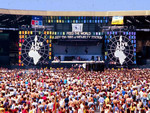 Live Aid was a dual-venue concert organised by Bob Geldof and Midge Ure held on 13 July 1985 to raise relief funds for the famine in Ethiopia. The event was considered a 'global jukebox' as it was held simultaneously at Wembley Stadium in London and the John F. Kennedy Stadium in Pennsylvania. The total number of attendees at the dual event reached over 170,00 people. The dual concert also inspired similar events to be held on the same day in other countries such as Australia and Germany. It was one of the most widely televised events of its time with an estimated global audience of 1.9 billion, across 150 nations. During the concerts, viewers were encouraged to donate money to the Live Aid cause; an estimated £150m is said to have been raised for Ethiopian famine relief as a direct result of the concerts. The success of the Live Aid concerts demonstrate how music can be utilized as a force for good and how it can be used as a source of cultural exchange to bring people together. The magnitude of the global efforts to provide relief for the Ethiopian famine created a sense of unity worldwide.
Live Aid was a dual-venue concert organised by Bob Geldof and Midge Ure held on 13 July 1985 to raise relief funds for the famine in Ethiopia. The event was considered a 'global jukebox' as it was held simultaneously at Wembley Stadium in London and the John F. Kennedy Stadium in Pennsylvania. The total number of attendees at the dual event reached over 170,00 people. The dual concert also inspired similar events to be held on the same day in other countries such as Australia and Germany. It was one of the most widely televised events of its time with an estimated global audience of 1.9 billion, across 150 nations. During the concerts, viewers were encouraged to donate money to the Live Aid cause; an estimated £150m is said to have been raised for Ethiopian famine relief as a direct result of the concerts. The success of the Live Aid concerts demonstrate how music can be utilized as a force for good and how it can be used as a source of cultural exchange to bring people together. The magnitude of the global efforts to provide relief for the Ethiopian famine created a sense of unity worldwide. -
1986
THE HUMAN RIGHTS CONCERTS
Human Rights Movement Bringing People Together
 The 'Human Rights Concerts' is the name of a series of concerts presented by the human rights organizations Amnesty International in the years 1986-1998. Four main concerts were held: A Conspiracy of Hope (1986), Human Rights Now! (1988), An Embrace of Hope (1990) and The Struggle Continues (1998). The concerts were created with the intention of building a support group for Amnesty among musicians and to channel this support into a series of rock concerts and tours. The concerts attracts nearly one and a half million people. Performers give press conferences in each city at related media events and through their music they attempt to engage with the public on themes of human rights and human dignity. Furthermore participants of the concerts are provided with a copy of the Universal Declaration in their own language and an opportunity to sign the Declaration themselves and join the worldwide human rights movement.
The 'Human Rights Concerts' is the name of a series of concerts presented by the human rights organizations Amnesty International in the years 1986-1998. Four main concerts were held: A Conspiracy of Hope (1986), Human Rights Now! (1988), An Embrace of Hope (1990) and The Struggle Continues (1998). The concerts were created with the intention of building a support group for Amnesty among musicians and to channel this support into a series of rock concerts and tours. The concerts attracts nearly one and a half million people. Performers give press conferences in each city at related media events and through their music they attempt to engage with the public on themes of human rights and human dignity. Furthermore participants of the concerts are provided with a copy of the Universal Declaration in their own language and an opportunity to sign the Declaration themselves and join the worldwide human rights movement. -
1987
CHINA DISABLED PEOPLE'S PERFORMING ART TROUPE (CDPPAT)
 Symbol of Hope and Solidarity for Disabled Persons in China
The China Disabled People's Performing Art Troupe was founded in 1987, as about 30 disabled persons who loved the arts where approved to participate in the 1st China Art Festival. The first 13 years of the organization was more amateurish, and the main idea behind the organization was "Equality and Participation". In 2002, the CDPPAT made their commercial shows pretty successful and finally got recognition by the audience. The group is composed of performers with sight, hearing, mental or motor disabilities or speech impairment. The group can be seen as an example of cultural diplomacy in practise, as it give people with disabilities an opportunity of artistic expression. Especially because there has been a great deal of stigma attached to disables persons in China, the CDPPAT is a symbol of hope and solidarity and it definitely enhancing the work of UNESCO with regards to promoting the Convention on the Rights of Persons with Disabilities.
Symbol of Hope and Solidarity for Disabled Persons in China
The China Disabled People's Performing Art Troupe was founded in 1987, as about 30 disabled persons who loved the arts where approved to participate in the 1st China Art Festival. The first 13 years of the organization was more amateurish, and the main idea behind the organization was "Equality and Participation". In 2002, the CDPPAT made their commercial shows pretty successful and finally got recognition by the audience. The group is composed of performers with sight, hearing, mental or motor disabilities or speech impairment. The group can be seen as an example of cultural diplomacy in practise, as it give people with disabilities an opportunity of artistic expression. Especially because there has been a great deal of stigma attached to disables persons in China, the CDPPAT is a symbol of hope and solidarity and it definitely enhancing the work of UNESCO with regards to promoting the Convention on the Rights of Persons with Disabilities. -
1988
HUMAN RIGHTS NOW!
A Six Week World-Wide Tour
 Human Rights Now! was a twenty concert world-wide tour lasting six weeks in 1988, benefitting Amnesty International. It wa sheld to raise awareness of both the Universal Declaration of Human Rights on its 40th anniversary and the work of Amnesty International. The shows featured Bruce Springsteen and the E Street Band, Sting, Peter Gabriel, Tracy Chapman, and Youssou N'Dour, plus guest artists from each of the countries where concerts were held; London, Paris, Budapest, Turin, Barcelona, San José, Toronto, Montreal, Philadelphia, Los Angeles, Oakland, Tokyo, New Delhi, Athens, Harare, Abidjan, São Paulo, Mendoza and Buenos Aires. The Leaders of Amnesty International and the artists held press conferences at each location, while participants were provided a copy of the Universal Declaration of Human Rights in their own language, and an opportunity to sign the Declaration themselves and join the worldwide human rights movement.
Human Rights Now! was a twenty concert world-wide tour lasting six weeks in 1988, benefitting Amnesty International. It wa sheld to raise awareness of both the Universal Declaration of Human Rights on its 40th anniversary and the work of Amnesty International. The shows featured Bruce Springsteen and the E Street Band, Sting, Peter Gabriel, Tracy Chapman, and Youssou N'Dour, plus guest artists from each of the countries where concerts were held; London, Paris, Budapest, Turin, Barcelona, San José, Toronto, Montreal, Philadelphia, Los Angeles, Oakland, Tokyo, New Delhi, Athens, Harare, Abidjan, São Paulo, Mendoza and Buenos Aires. The Leaders of Amnesty International and the artists held press conferences at each location, while participants were provided a copy of the Universal Declaration of Human Rights in their own language, and an opportunity to sign the Declaration themselves and join the worldwide human rights movement. -
1989
MOSCOW MUSIC PEACE FESTIVAL
Promoting global peace and fighting drug war in Russia through hard rock music
 Organised in 1989, the Moscow Music Peace Festival was a one-time campaign to promote world peace and to mobilise international cooperation to fight drug war in Russia. It was a gathering of high-profile hard rock and heavy metal bands, including Bon Jovi, Ozzy Osbourne, the Scorpions and many others. The festival was also a manifestation of enormous social change sweeping through the Soviet Union and its opening up to the West, effectively marking the end of Cold War.
Organised in 1989, the Moscow Music Peace Festival was a one-time campaign to promote world peace and to mobilise international cooperation to fight drug war in Russia. It was a gathering of high-profile hard rock and heavy metal bands, including Bon Jovi, Ozzy Osbourne, the Scorpions and many others. The festival was also a manifestation of enormous social change sweeping through the Soviet Union and its opening up to the West, effectively marking the end of Cold War.
The Moscow Music Peace Festival is an example of cultural diplomacy where music plays an important catalyst in building bridges between the East and the West and unites people to campaign for a common purpose. -
1992
VEDRAN SMAILOVIĆ CONCERT DURING BALKAN WAR
Cellist from Sarajevo playing in War Ruins
 Vedran Smailović, a Bosnian cellist, became known to the public after his unusual performances during the Balkan War. In 1992, the Serbian forces launched a 4-year long siege of Sarajevo. Between 1992 and 1993, Smalović played his cello regularly in ruined buildings and during funerals that were often targeted by snipers. His brave acts drew international attention to the dramatic situation in Sarajevo. Smailović became an inspiration for many artists and peacekeepers; and had his story described in the The Cellist of Sarajevo. A simple cello concert played amongst the smoldering ruins of the Balkan capital became one of the most recognizable symbols of peace undertaken by a single man. Once again music had demonstrated its ability to enact real changes in the political world.
Vedran Smailović, a Bosnian cellist, became known to the public after his unusual performances during the Balkan War. In 1992, the Serbian forces launched a 4-year long siege of Sarajevo. Between 1992 and 1993, Smalović played his cello regularly in ruined buildings and during funerals that were often targeted by snipers. His brave acts drew international attention to the dramatic situation in Sarajevo. Smailović became an inspiration for many artists and peacekeepers; and had his story described in the The Cellist of Sarajevo. A simple cello concert played amongst the smoldering ruins of the Balkan capital became one of the most recognizable symbols of peace undertaken by a single man. Once again music had demonstrated its ability to enact real changes in the political world. -
1995
THE WORLD ORCHESTRA FOR PEACE
An expression of harmony on all levels
 The World Orchestra for Peace was founded in 1996 by Sir Georg Solti under the motto: 'the unique strength of music as an ambassador for peace'. The orchestra consists out of players who come from orchestras from all over the world. The musicians just come together to play a specific concert, therefore the orchestra has no existence outside the special occasions that they call it into being. The orchestra is unique as it is first of all a very logistical challenge, as everyone needs to assembledto play this specific concert and its members do not draw a salary from it. The World Orchestra for Peace is a good example of cultural diplomacy in practise, as it was created with a vision of an orchestra from all corners of the globe, that would realize the unifying power of music and show how musicians from different political and religious cultures can work together.
The World Orchestra for Peace was founded in 1996 by Sir Georg Solti under the motto: 'the unique strength of music as an ambassador for peace'. The orchestra consists out of players who come from orchestras from all over the world. The musicians just come together to play a specific concert, therefore the orchestra has no existence outside the special occasions that they call it into being. The orchestra is unique as it is first of all a very logistical challenge, as everyone needs to assembledto play this specific concert and its members do not draw a salary from it. The World Orchestra for Peace is a good example of cultural diplomacy in practise, as it was created with a vision of an orchestra from all corners of the globe, that would realize the unifying power of music and show how musicians from different political and religious cultures can work together. -
1999
PEACE AND LOVE FESTIVAL
Diversity, Solidarity and Understanding
 The Peace & Love festival was founded as a reaction to the ongoing violence and was first held in 1999 in central Borlänge, Sweden. The concept of the festival was to spread the message of diversity, solidarity and understanding. The whole idea was to bring cultures together, to cross borders and attempt to try get people to change their attitudes towards themselves and others. After the first festival attracted 900 visitors, the Peace & Love concert became one of Scandinavia's fastest-growing festivals, with over 25.000 visitors in 2008. Each year the festival focuses upon a specific subject which visitors should reflect about, past year themes were about topics such as : freedom of speech, democracy, freedom, and a new world. The festival can be seen as an historical act of cultural diplomacy resulting from the fact that the main concept was to bring cultures together and to spread the message of diversity, solidarity and understanding. The intent of the Peace & Love festival was to foster mutual understanding between nations and their people.
The Peace & Love festival was founded as a reaction to the ongoing violence and was first held in 1999 in central Borlänge, Sweden. The concept of the festival was to spread the message of diversity, solidarity and understanding. The whole idea was to bring cultures together, to cross borders and attempt to try get people to change their attitudes towards themselves and others. After the first festival attracted 900 visitors, the Peace & Love concert became one of Scandinavia's fastest-growing festivals, with over 25.000 visitors in 2008. Each year the festival focuses upon a specific subject which visitors should reflect about, past year themes were about topics such as : freedom of speech, democracy, freedom, and a new world. The festival can be seen as an historical act of cultural diplomacy resulting from the fact that the main concept was to bring cultures together and to spread the message of diversity, solidarity and understanding. The intent of the Peace & Love festival was to foster mutual understanding between nations and their people. -
1999
WEST-EASTERN DIVAN ORCHESTRA
Equal in Music
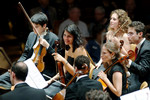 Daniel Barenboim and Edward Said founded the orchestra in 1999 as a workshop for Isreali, Palestian and other Arab musicians. The orchestra is based in Seville, Spain and has performed around the world. The aim of the orchestra is to promote understanding between Isrealis and Palestinians and to lay the foundations for a peaceful and fair solution of the Israeli-Palestinian conflict. In 2005 the orchestra performed in Ramallah, their first event in the Occupied Territories. For many Palestinians in the audience, this was the very first time they encountered Isrealis in a non-military setting. A young girl who saw Barenboim said: "You are the first thing I've seen from Israel that is not a soldier or a tank." The West-Eastern Divan Orchestra aspires to total freedom and equality and on this basis they come together and play music. Using music as a tool to promote understanding between Isrealis and Palestinians, is definitely an act of cultural diplomacy.
Daniel Barenboim and Edward Said founded the orchestra in 1999 as a workshop for Isreali, Palestian and other Arab musicians. The orchestra is based in Seville, Spain and has performed around the world. The aim of the orchestra is to promote understanding between Isrealis and Palestinians and to lay the foundations for a peaceful and fair solution of the Israeli-Palestinian conflict. In 2005 the orchestra performed in Ramallah, their first event in the Occupied Territories. For many Palestinians in the audience, this was the very first time they encountered Isrealis in a non-military setting. A young girl who saw Barenboim said: "You are the first thing I've seen from Israel that is not a soldier or a tank." The West-Eastern Divan Orchestra aspires to total freedom and equality and on this basis they come together and play music. Using music as a tool to promote understanding between Isrealis and Palestinians, is definitely an act of cultural diplomacy. -
1999
MUSICANS WITHOUT BORDERS
Using the Power of Music
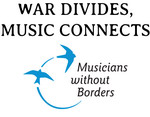 'Musicians without Borders' is a global organization founded in 1999. The goal of the organization is to use music as an instrument in order to heal and reconcile specific areas of conflict and war. The organization develops musical projects which seek to alleviate suffering of the afflicted peoples and works in cooperation with local musicians and civil society organizations. Musicians without Borders has been active in several conferences and music festivals and has led to the creation a whole network of musicians and organizations from across the world. The organization 'Musicians without Borders' aims to connect cultures and use music as a vehicle in order to heal the wounds of victims of war and conflicts. Community music-making is an accessible way to connect people and give them a way to deal with trauma.
'Musicians without Borders' is a global organization founded in 1999. The goal of the organization is to use music as an instrument in order to heal and reconcile specific areas of conflict and war. The organization develops musical projects which seek to alleviate suffering of the afflicted peoples and works in cooperation with local musicians and civil society organizations. Musicians without Borders has been active in several conferences and music festivals and has led to the creation a whole network of musicians and organizations from across the world. The organization 'Musicians without Borders' aims to connect cultures and use music as a vehicle in order to heal the wounds of victims of war and conflicts. Community music-making is an accessible way to connect people and give them a way to deal with trauma. -
2000
MUSIC 4 PEACE
Music Foundation set up to spread Peace
 The Music 4 Peace Foundation was set up in 2000 by Tobias Huber with the aim to spread peace through cultural exchange. Music and art are used as a means to achieve social unity and to promote non-violence. The Foundation's projects are predominantly targeted at the youth, as they will be the ones who will be shaping the future of the planet. The Foundation runs and supports educational programs, cultural projects and music events as well as working with a numerous partner organisations that all share the mission of peace. Music 4 Peace has supported a wide-range of cultural music events such as the United Nation's 'No Excuse Concert' and Asia's largest World Performing Arts Festival in Pakistan. By working with and supporting fellow peace organisations, Music 4 Peace can spread their message of peace and non-violence. The shared experience integral to music and art can unify people from a plethora of cultures.
The Music 4 Peace Foundation was set up in 2000 by Tobias Huber with the aim to spread peace through cultural exchange. Music and art are used as a means to achieve social unity and to promote non-violence. The Foundation's projects are predominantly targeted at the youth, as they will be the ones who will be shaping the future of the planet. The Foundation runs and supports educational programs, cultural projects and music events as well as working with a numerous partner organisations that all share the mission of peace. Music 4 Peace has supported a wide-range of cultural music events such as the United Nation's 'No Excuse Concert' and Asia's largest World Performing Arts Festival in Pakistan. By working with and supporting fellow peace organisations, Music 4 Peace can spread their message of peace and non-violence. The shared experience integral to music and art can unify people from a plethora of cultures. -
2004
PLAYING FOR CHANGE
Inspire, connect, and bring peace to the world through music.
 Playing for Change is a multimedia music project, created in 2004 by the American producer and sound engineer Mark Johnson with his Timeless Media Group. It's goal is to bring musicians together from around the world. Playing For Change also created a separate non-profit organization called the Playing For Change Foundation which builds music schools for children around the world.
Playing for Change is a multimedia music project, created in 2004 by the American producer and sound engineer Mark Johnson with his Timeless Media Group. It's goal is to bring musicians together from around the world. Playing For Change also created a separate non-profit organization called the Playing For Change Foundation which builds music schools for children around the world.
The organisations goal is to 'inspire, connect, and bring peace to the world through music'. Mark Johnson and Enzo Buono, (the creators of the project) traveled around the world. They visited places like New Orleans, Barcelona, South Africa, India, Nepal, the Middle East and Ireland. Using mobile recording equipment, they recorded local musicians performing the same song, interpreted in their own style. -
2005
THE RHYTHM ROAD: AMERICAN MUSIC ABROAD
US Jazz Diplomacy in the Post-Cold War Era
 Following in the footsteps of Cold War "Jazz Ambassadors" like Dizzy Gillespie and Louis Armstrong, the US State Department launched the "Rhythm Road" program which involved sending American musicians abroad to areas where the US society and culture are often met with animosity. Rhythm Road represents the new generation of musical ambassadors; reaching beyond concert halls to interact with other musicians and citizens around the globe. Designed to promote intercultural dialogue, bypass negative images and fight stereotypes, the program has seen American artists interact with peoples and audiences from Africa, Asia and South America. Although an overt act of Cultural Diplomacy sponsored at the state level, Rhythm Road promotes real grassroots interaction between US musicians and peoples of the world, promoting a spirit of cooperation, friendship, creativity and peace.
Following in the footsteps of Cold War "Jazz Ambassadors" like Dizzy Gillespie and Louis Armstrong, the US State Department launched the "Rhythm Road" program which involved sending American musicians abroad to areas where the US society and culture are often met with animosity. Rhythm Road represents the new generation of musical ambassadors; reaching beyond concert halls to interact with other musicians and citizens around the globe. Designed to promote intercultural dialogue, bypass negative images and fight stereotypes, the program has seen American artists interact with peoples and audiences from Africa, Asia and South America. Although an overt act of Cultural Diplomacy sponsored at the state level, Rhythm Road promotes real grassroots interaction between US musicians and peoples of the world, promoting a spirit of cooperation, friendship, creativity and peace. -
2005
I ♥ HIP HOP
First Hip-Hop Festival in Morocco
 Whilst in Marrakesh as a Fulbright scholar in 2004, filmmaker Josh Asen was surprised to discover the sounds Eminem, 50 Cent, and other hip-hop mixed in with the traditional notes of tribal music. Asen had stumbled across 'fnaire', a local group specialising in laying complex beats over samples of traditional Arabic music, transcending cultural barriers with their tracks. Captivated by what he was witnessing, Asen abandoned his studies and immersed himself in this new music scene populated by 'fnaire' and other young North Africans. Talking to the local rap artists, Asen realised that their style of music faced fundamental misunderstanding and resistance. Powerful conservative elements in the country suppressed the musical movement, conflating any sign of hip hop with an aggressive, immoral and anti-Islam agenda. However, far from rapping about violence, guns, and cars, the young artists were conveying a positive message and using their hip hop as vehicle for change. As Asen explained of the message, "Hip-hop is part of the democratic process. It is the empowerment and the birth of the voice of the oppressed, of the underclass, this is the young people seizing a voice for themselves, in a way they haven't done since the seventies". With the help of Asen and the US Embassy, the young North African musicians secured funding for a major hip hop festival, drawing crowds of thousands and gaining international attention. Truly an act of international Cultural Diplomacy, the "I ♥ hip hop" festival project was the culmination of efforts from different counties and cultures working together to express themselves and provide a new voice to the peoples of North Africa. The cultural exchange not only provided a voice for the young generations of North Africa but also presented to the world a more modern and progressive vision of North Africa to the world, a vision free from demonized stereotypes of Islamic countries and the Arabic world.
.
Whilst in Marrakesh as a Fulbright scholar in 2004, filmmaker Josh Asen was surprised to discover the sounds Eminem, 50 Cent, and other hip-hop mixed in with the traditional notes of tribal music. Asen had stumbled across 'fnaire', a local group specialising in laying complex beats over samples of traditional Arabic music, transcending cultural barriers with their tracks. Captivated by what he was witnessing, Asen abandoned his studies and immersed himself in this new music scene populated by 'fnaire' and other young North Africans. Talking to the local rap artists, Asen realised that their style of music faced fundamental misunderstanding and resistance. Powerful conservative elements in the country suppressed the musical movement, conflating any sign of hip hop with an aggressive, immoral and anti-Islam agenda. However, far from rapping about violence, guns, and cars, the young artists were conveying a positive message and using their hip hop as vehicle for change. As Asen explained of the message, "Hip-hop is part of the democratic process. It is the empowerment and the birth of the voice of the oppressed, of the underclass, this is the young people seizing a voice for themselves, in a way they haven't done since the seventies". With the help of Asen and the US Embassy, the young North African musicians secured funding for a major hip hop festival, drawing crowds of thousands and gaining international attention. Truly an act of international Cultural Diplomacy, the "I ♥ hip hop" festival project was the culmination of efforts from different counties and cultures working together to express themselves and provide a new voice to the peoples of North Africa. The cultural exchange not only provided a voice for the young generations of North Africa but also presented to the world a more modern and progressive vision of North Africa to the world, a vision free from demonized stereotypes of Islamic countries and the Arabic world.
.
-
2006
DANCING TO CONNECT
Connecting the world through dance
 The ''Dancing to Connect'' initiative was founded in 2006 by Battery Dance Company, a New York City Dance community, and was sponsored by the US Department of State and the US Bureau of Educational and Cultural Affairs. The key goal of the initiative is to bring youths together from both sides of a ' pressing conflict' and bring them together in a series of workshops, helping to engage them in teambuilding and creativity through dance. The initiative is currently operational in 26 countries across the world and aims to expand this number to fifty by 2017. One of its highlights so far has been the Israeli-Palestinian-German Dancing to Connect 2011, bridging the Israeli-Palestinian divide. Widely regarded as a success, the initiative is a good example of ''New school' Cultural Diplomacy, conducted by private organisations and civil society rather than by governments.
The ''Dancing to Connect'' initiative was founded in 2006 by Battery Dance Company, a New York City Dance community, and was sponsored by the US Department of State and the US Bureau of Educational and Cultural Affairs. The key goal of the initiative is to bring youths together from both sides of a ' pressing conflict' and bring them together in a series of workshops, helping to engage them in teambuilding and creativity through dance. The initiative is currently operational in 26 countries across the world and aims to expand this number to fifty by 2017. One of its highlights so far has been the Israeli-Palestinian-German Dancing to Connect 2011, bridging the Israeli-Palestinian divide. Widely regarded as a success, the initiative is a good example of ''New school' Cultural Diplomacy, conducted by private organisations and civil society rather than by governments. -
2006
REQUIEM CONCERT IN TSHINVALY, SOUTH OSETIA
To you – alive and dead! To You, South Osetia!
 Soon after the war between Russia and Georgia in August 2008 famous Russian conductor Valeriy Gergiev the Orchestra of St Petersburg's Mariinsky Opera and Ballet Theatre performed a concert in front of the government's house in South Osetia to pay tribute to the people who suffered from that events. The Concert was called "To you – alive and dead! To You, South Osetia!". It was an open air concert and and played in the ruins of the recent war. The concert represented a symbolic appeal to the peace and friendship between two nations – Russian and Georgians and an act that helped to attract world's attention to the situation.
Soon after the war between Russia and Georgia in August 2008 famous Russian conductor Valeriy Gergiev the Orchestra of St Petersburg's Mariinsky Opera and Ballet Theatre performed a concert in front of the government's house in South Osetia to pay tribute to the people who suffered from that events. The Concert was called "To you – alive and dead! To You, South Osetia!". It was an open air concert and and played in the ruins of the recent war. The concert represented a symbolic appeal to the peace and friendship between two nations – Russian and Georgians and an act that helped to attract world's attention to the situation. -
2007
BEATING WING ORCHESTRA
Music Collective of Refugee and Migrant Members
 The Beating Wing Orchestra was born from a project set up by Community Arts North West. The Orchestra is based in Manchester and is an international musical collective consisting of members from refugee or migrant backgrounds. Each of the musicians brought to the collective their own culturally influenced music styles. The orchestra's rich multinational sound has attracted much praise within its community and beyond as highlighted by their repeated participation in the Manchester International Festival. The Beating Wing Orchestra has also attracted the attention of esteemed composers and contemporary international artists leading to a number of successful collaborations. The formation of the Beating Wing Orchestra is a prime example of Cultural Diplomacy within the community as it strengthens relations between Manchester's rich mix of nationalities and cultures. The cultural exchange shared within the orchestra increases awareness and appreciation of a wealth of different cultures.
The Beating Wing Orchestra was born from a project set up by Community Arts North West. The Orchestra is based in Manchester and is an international musical collective consisting of members from refugee or migrant backgrounds. Each of the musicians brought to the collective their own culturally influenced music styles. The orchestra's rich multinational sound has attracted much praise within its community and beyond as highlighted by their repeated participation in the Manchester International Festival. The Beating Wing Orchestra has also attracted the attention of esteemed composers and contemporary international artists leading to a number of successful collaborations. The formation of the Beating Wing Orchestra is a prime example of Cultural Diplomacy within the community as it strengthens relations between Manchester's rich mix of nationalities and cultures. The cultural exchange shared within the orchestra increases awareness and appreciation of a wealth of different cultures. -
2007
PEACE INDUSTRY MUSIC GROUP: THE BOYDS & FRIENDS
Modern Von Trapp Family singing for peace
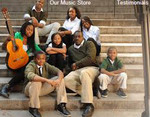 The Peace Industry Music Group, started as a modern Von Trapp family, as John Boyd (accomplished singer, composer and music director) and seven of his nine children have been singing and warming the hearts of passerby in Central Park. The group has now expanded and several singers and classical musicians from all different nationalities joined the music group. The Goal of the group is to promote the idea of peace 'through their uplifting music and tranquil sound'. The music performed is a mix of pop, opera, gospel, jazz and spirituals. The group uses their music in order to promote the idea of peace and consists of musicians from all different nationalities, in order to say that we are all the same.
The Peace Industry Music Group, started as a modern Von Trapp family, as John Boyd (accomplished singer, composer and music director) and seven of his nine children have been singing and warming the hearts of passerby in Central Park. The group has now expanded and several singers and classical musicians from all different nationalities joined the music group. The Goal of the group is to promote the idea of peace 'through their uplifting music and tranquil sound'. The music performed is a mix of pop, opera, gospel, jazz and spirituals. The group uses their music in order to promote the idea of peace and consists of musicians from all different nationalities, in order to say that we are all the same.

-
2009
MUSICIANS FOR HUMAN RIGHTS
An Organization Open to All Musicians
 Musicians for Human Rights is a worldwide network of musicians and people working in the field of music who promote a culture of human rights and social change. It was founded in Rome in 2009 by Alessio Allegrini and a group of other musicians, organizations and humanists. It is open to musicians of all levels, ensembles, institutions and all other people working in any field of music. Alessio Allegrini also directs the The Human Rights Orchestra, the first major initiative of Musicians for Human Rights.
Musicians for Human Rights is a worldwide network of musicians and people working in the field of music who promote a culture of human rights and social change. It was founded in Rome in 2009 by Alessio Allegrini and a group of other musicians, organizations and humanists. It is open to musicians of all levels, ensembles, institutions and all other people working in any field of music. Alessio Allegrini also directs the The Human Rights Orchestra, the first major initiative of Musicians for Human Rights. -
2012
CHIMES OF FREEDOM
Honoring 50 Years of Amnesty International
 Chimes of Freedom: The Songs of Bob Dylan is a 4 CD album, featuring 76 songs. It honors 50 Years of Amnesty International, and is a charity compilation album featuring new recordings of compositions by Bob Dylan by multiple artists, and was released on January 24th, 2012. Proceeds from the album are donated to the human rights organization. Featured artists include Adele, My Chemical Romance, The Gaslight Anthem, Pete Townshend, Seal, Jeff Beck, Elvis Costello, Mark Knopfler, Darren Criss, Eric Burdon, Sting, Patti Smith, My Morning Jacket, Pete Seeger, Steve Earle and Rise Against.
Chimes of Freedom: The Songs of Bob Dylan is a 4 CD album, featuring 76 songs. It honors 50 Years of Amnesty International, and is a charity compilation album featuring new recordings of compositions by Bob Dylan by multiple artists, and was released on January 24th, 2012. Proceeds from the album are donated to the human rights organization. Featured artists include Adele, My Chemical Romance, The Gaslight Anthem, Pete Townshend, Seal, Jeff Beck, Elvis Costello, Mark Knopfler, Darren Criss, Eric Burdon, Sting, Patti Smith, My Morning Jacket, Pete Seeger, Steve Earle and Rise Against.

-
2013
PEACE ONE DAY CELEBRATION CONCERT
Uniting People for Peace
 In order to celebrate the 100th anniversary of the Peace Palace, the world famous Peace One Day Celebration Concert was held in the Peace Palace in The Hague, Netherlands. The concert took place on 21st of September 2013, the UN International Day of Peace. Artists who performed were, amongst others, Natasha Bedingfield, DJ Paul van Dyk, the Brazilian legend Carlinhos Brown, Spanish superstar Miguel Bose and the BRIT award winning band The Feeling. Organizers of the Celebration Concert were the non-profit organisation "Peace One Day", whose objective is to raise awareness of the International Day of Peace, that occurs on 21 September each year. The International Day of Peace intends to be a day for wide-scale community actions and to aid organisations to safely carry-out life-saving work in areas of conflict.
In order to celebrate the 100th anniversary of the Peace Palace, the world famous Peace One Day Celebration Concert was held in the Peace Palace in The Hague, Netherlands. The concert took place on 21st of September 2013, the UN International Day of Peace. Artists who performed were, amongst others, Natasha Bedingfield, DJ Paul van Dyk, the Brazilian legend Carlinhos Brown, Spanish superstar Miguel Bose and the BRIT award winning band The Feeling. Organizers of the Celebration Concert were the non-profit organisation "Peace One Day", whose objective is to raise awareness of the International Day of Peace, that occurs on 21 September each year. The International Day of Peace intends to be a day for wide-scale community actions and to aid organisations to safely carry-out life-saving work in areas of conflict. -
2013
DMZ WORLD PEACE CONCERT
Facilitating dialogue between North and South Korea
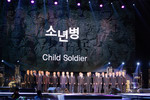 On August 3 2013, on the country's Independence Day, a pop concert was held near Korea's Demilitarized Zone to mark six decades since the fighting stopped in the Korean War. The Peace Concert was led by the world-famous conductor and pianist Daniel Barenboim. The concert was organized with the main of encouraging dialogue between the two Koreas and to bring 'understanding, patience, courage and curiosity to listen to one another', according to the Barenboim. The event also featured a choir of veterans who joined the South Korean army during the Korean war as child soldiers who sang the song "Our Wish is Korean Reunification". Furthermore Beethovens 9th symphony "Ode to Joy" was chosen to deliver a message of peace and in symbolization of the strength of humanity. A total of 10.000 people attended the concert. This Peace Concert can be seen as act of cultural diplomacy, as it uses one of the tools of culture, namely music in order to encourage dialogue between North and South Korea. As Barenboim stated in an interview "music may not be problem solver, but can be source of passion and interest that facilitated dialogue'.
On August 3 2013, on the country's Independence Day, a pop concert was held near Korea's Demilitarized Zone to mark six decades since the fighting stopped in the Korean War. The Peace Concert was led by the world-famous conductor and pianist Daniel Barenboim. The concert was organized with the main of encouraging dialogue between the two Koreas and to bring 'understanding, patience, courage and curiosity to listen to one another', according to the Barenboim. The event also featured a choir of veterans who joined the South Korean army during the Korean war as child soldiers who sang the song "Our Wish is Korean Reunification". Furthermore Beethovens 9th symphony "Ode to Joy" was chosen to deliver a message of peace and in symbolization of the strength of humanity. A total of 10.000 people attended the concert. This Peace Concert can be seen as act of cultural diplomacy, as it uses one of the tools of culture, namely music in order to encourage dialogue between North and South Korea. As Barenboim stated in an interview "music may not be problem solver, but can be source of passion and interest that facilitated dialogue'. -
2013
ATIZILUR CONCERT FOR PEACE
Bringing Jewish and Arab Musicians Together
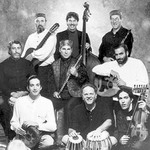 Atzilut "Concert for Peace" is a Middle Eastern ensemble which consists out of Arab and Jewish musicians who all come in concert together to make a powerful statement for peace through shared music. Atzilut concerts for peace is the only international touring ensemble which features instrumentalists which are proficient in the rhythms of Hebrew and Arabic Music. The group has an extensive performance history, they played at the United Nations, the Munich Casteig, the Royal Opera Theatre of Copenhagen and the Algavare International Festival. This ten-member music ensemble is of the opinion that no speeches are needed to make a statement for peace, the music itself is the message as it is a celebration of hope and trust. Furthermore they try to bring together Arab and Jewish musicians through their music, by combining two traditions trying to find common roots and overcome conflicts.
Atzilut "Concert for Peace" is a Middle Eastern ensemble which consists out of Arab and Jewish musicians who all come in concert together to make a powerful statement for peace through shared music. Atzilut concerts for peace is the only international touring ensemble which features instrumentalists which are proficient in the rhythms of Hebrew and Arabic Music. The group has an extensive performance history, they played at the United Nations, the Munich Casteig, the Royal Opera Theatre of Copenhagen and the Algavare International Festival. This ten-member music ensemble is of the opinion that no speeches are needed to make a statement for peace, the music itself is the message as it is a celebration of hope and trust. Furthermore they try to bring together Arab and Jewish musicians through their music, by combining two traditions trying to find common roots and overcome conflicts.

